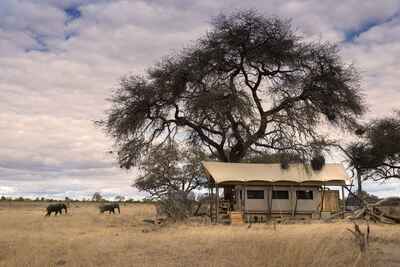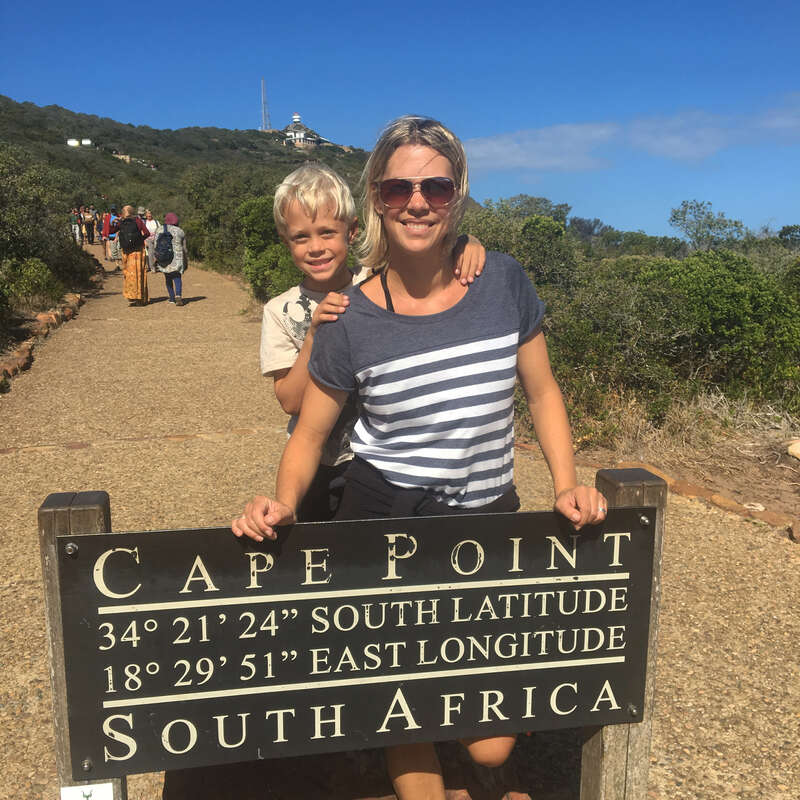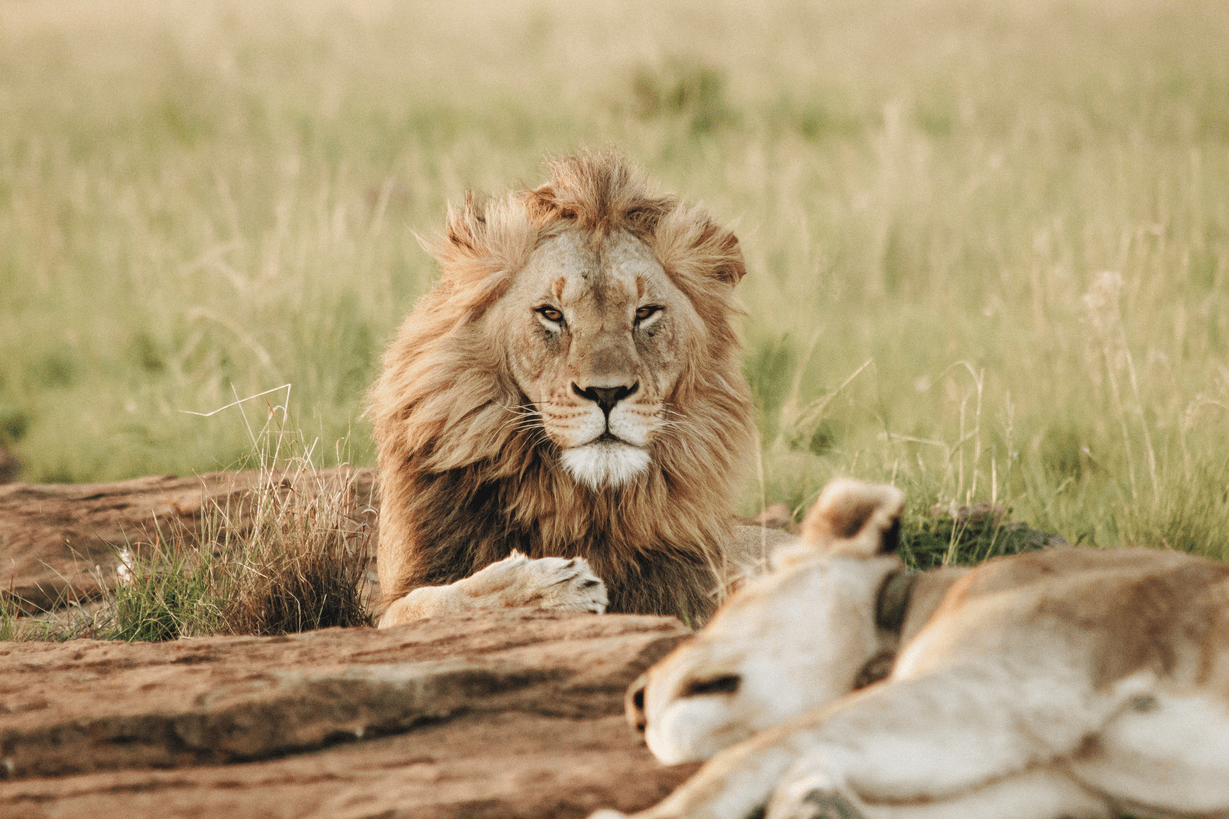About Somalisa Expeditions
A reinvention of a classic Hwange safari camp, Somalisa Expeditions opened at the start of 2017.
The camp sits among a grove of acacia trees in a private, 150km² concession in the heart of Hwange National Park, and offers a friendly if relatively simple safari experience.
Somalisa Expeditions provides the experience of a traditional safari camp in the middle of a wildlife-rich area, balancing its simple rustic design with more stylish and comfortable elements. It's a great choice for travellers looking for a classic African safari camp that can deliver excellent guiding and superb wildlife viewing, both on activities and from the camp itself.
Our view
Somalisa Expeditions provides the experience of a traditional safari camp in the middle of a wildlife-rich area, balancing its simple rustic design with more stylish and comfortable elements. It's a great choice for travellers looking for a classic African safari camp that can deliver excellent guiding and superb wildlife viewing, both on activities and from the camp itself.
Accommodation
6 safari tents
Children
Best for 16+
Open
All year
Activities

4WD Safari

Birdwatching

Guided walking safari

Night drive

Private activities
Traveller reviews of Somalisa Expeditions
18 real, un-edited reviews from Expert Africa's travellers.
Arrived 30 Aug 2024, 3 nights
"Somalisa Expeditions review"
Overall rating: Excellent
Arrived 10 Aug 2024, 3 nights
"Somalisa Expeditions review"
Overall rating: Good
Arrived 22 Jun 2024, 2 nights
"Somalisa Expeditions review"
Overall rating: Good
Arrived 17 Sep 2022, 3 nights
"Somalisa Expeditions safari experience "
Overall rating: Excellent
Arrived 8 Sep 2022, 4 nights
"Somalisa Expeditions review"
Overall rating: Excellent
Arrived 28 Jul 2022, 4 nights
"Somalisa Expeditions review"
Overall rating: Excellent
Arrived 27 Apr 2022, 3 nights
"Somalisa Expeditions review"
Overall rating: Excellent
Arrived 2 Sep 2019, 3 nights
"Excellent in every way"
Overall rating: Excellent
Arrived 27 Aug 2019, 3 nights
"Excellent safari at Somalisa Expeditions"
Overall rating: Excellent
Arrived 25 Jul 2019, 4 nights
"Somalisa Expeditions review"
Overall rating: Excellent
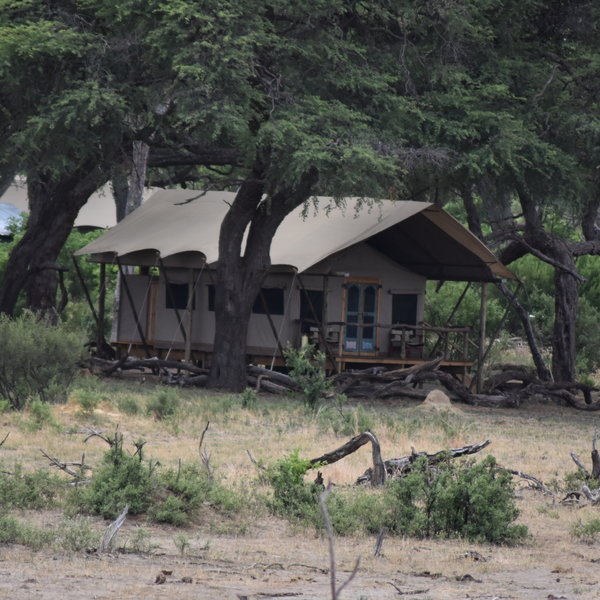
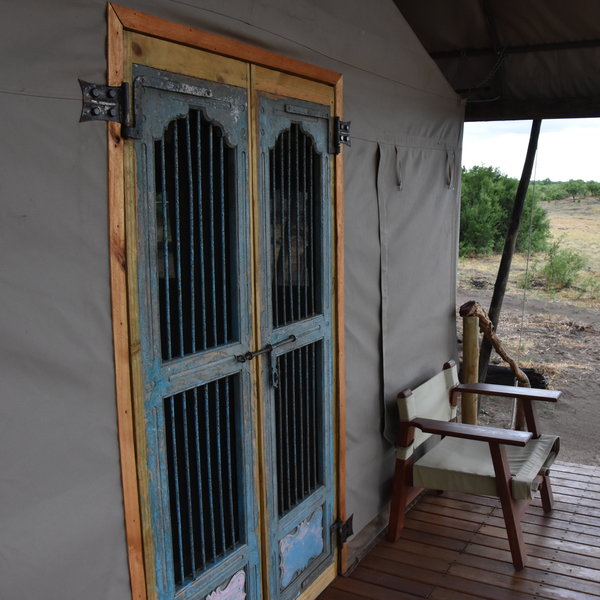
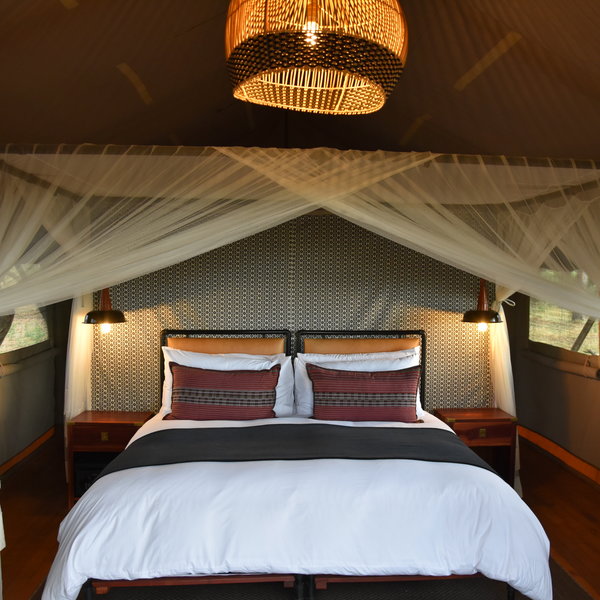
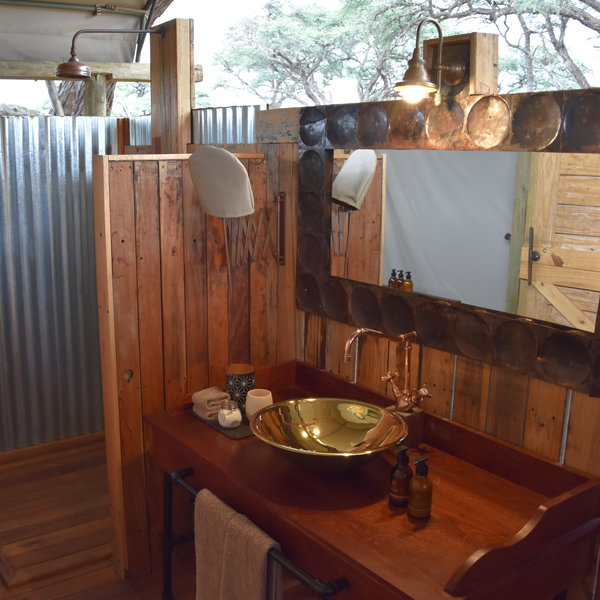
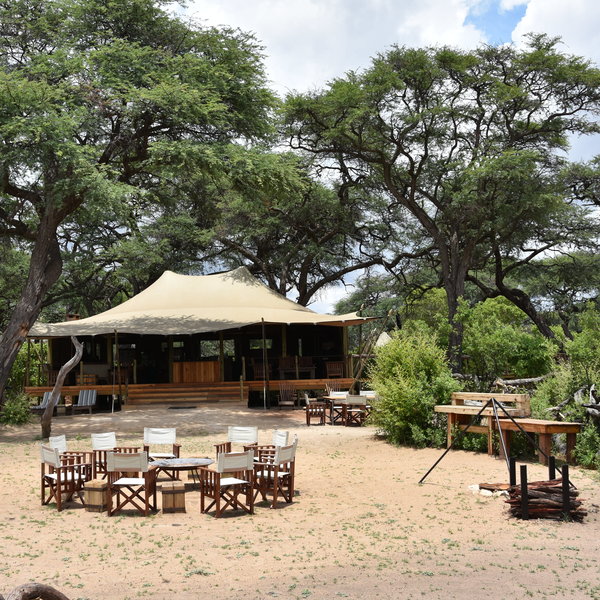
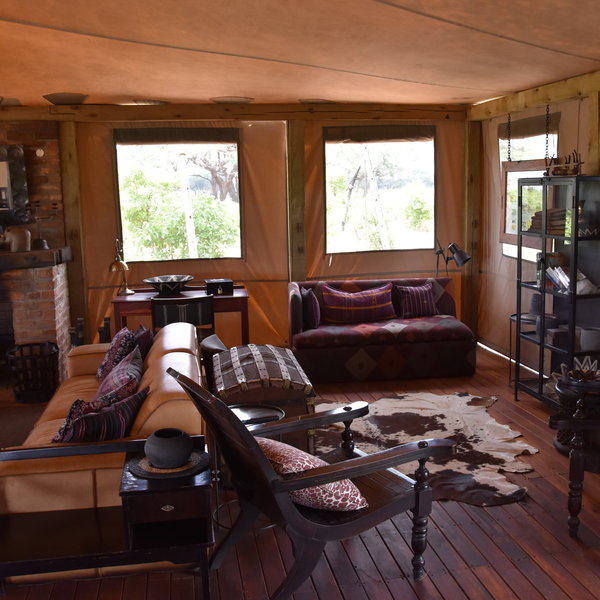
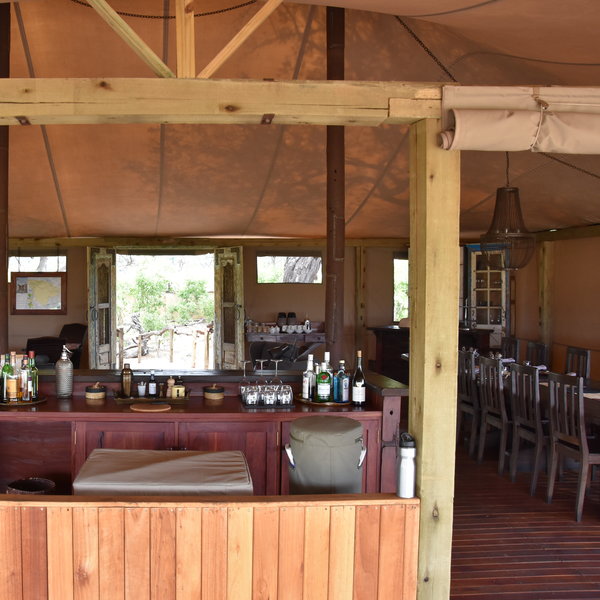
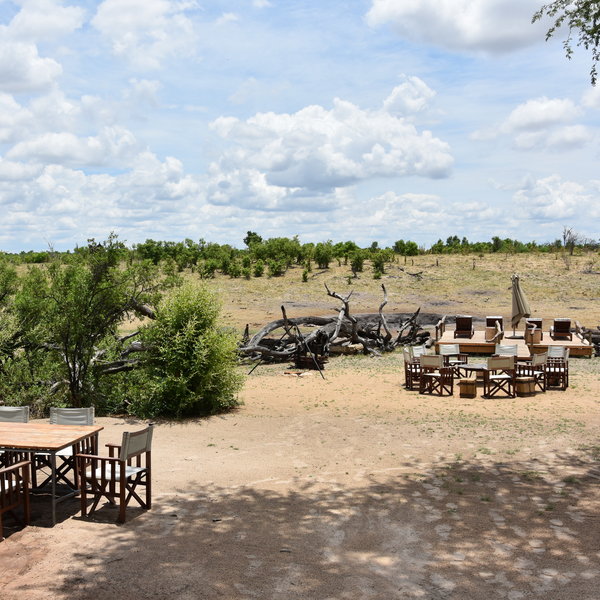
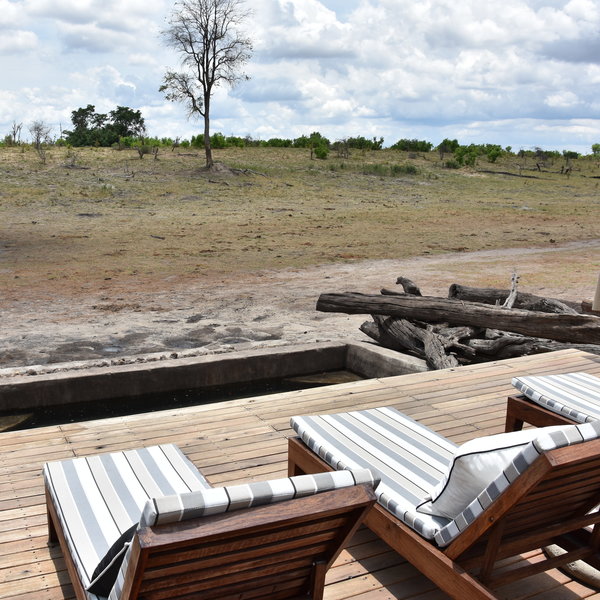

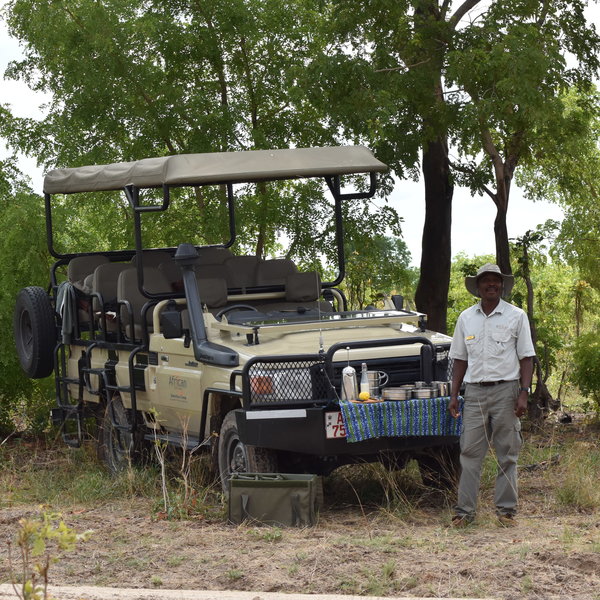
Expert Africa's gallery
When we travel we take lots of photos ourselves to give you a real and un-edited view of the safaris. See our 11 pictures and 1 videos of Somalisa Expeditions to get the candid view.
View gallerySafaris visiting Somalisa Expeditions
Just ideas, we'll always tailor-make a trip for you
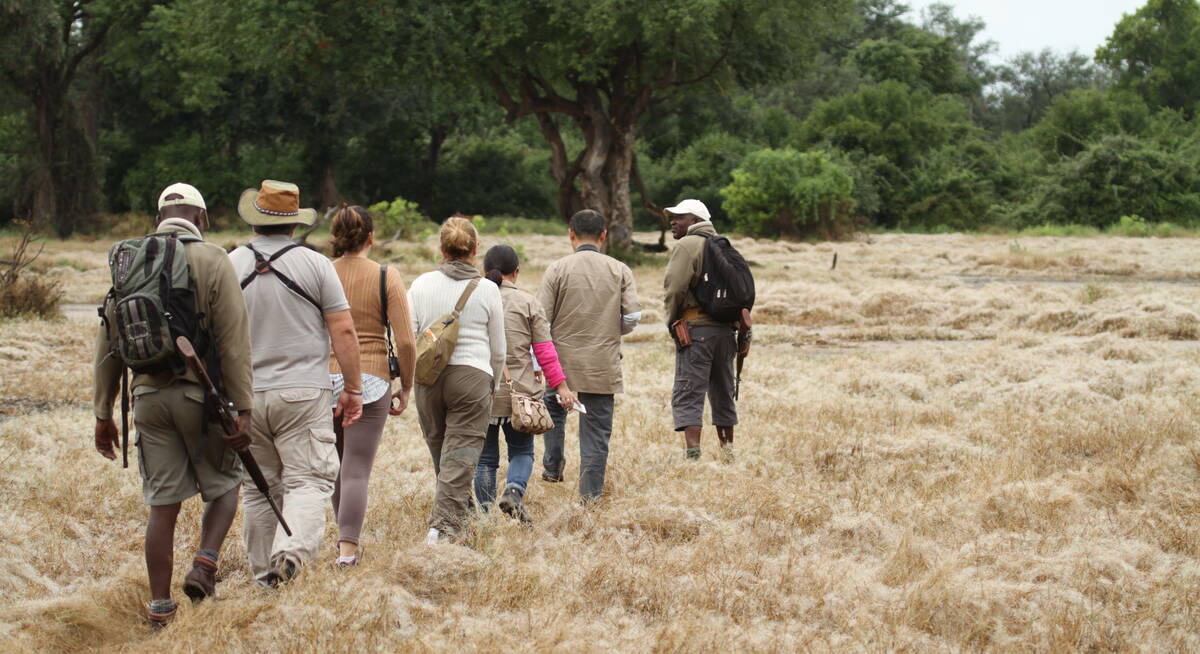
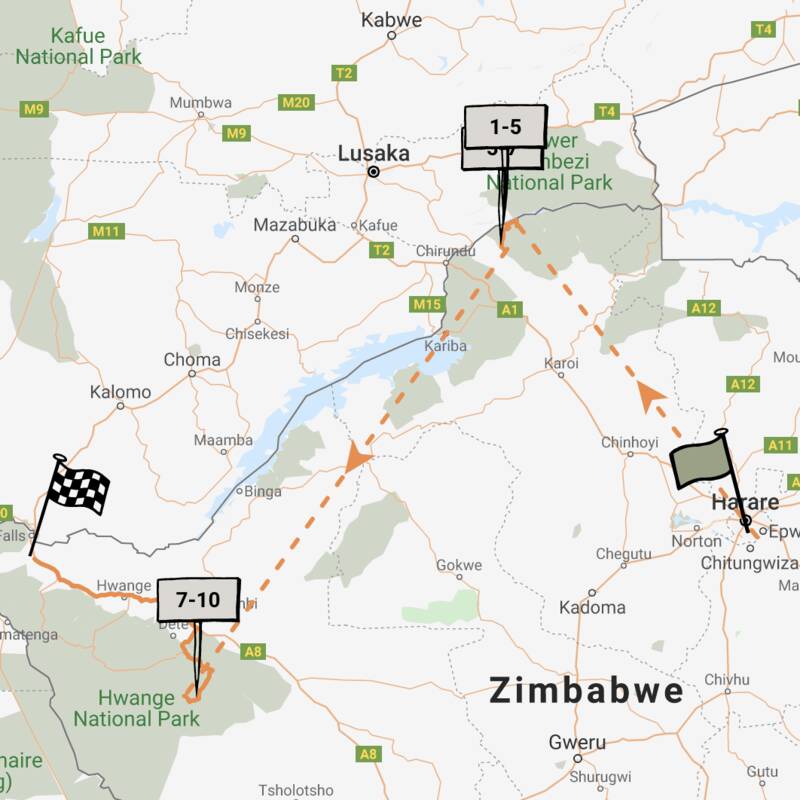
Buffalo Safari
9 days • 3 locations • 1 country
HARARE AIRPORT TO VICTORIA FALLS AIRPORT
Combining Zimbabwe’s Mana Pools and Hwange national parks with stays at intimate six-tent safari camps offering excellent walking, canoeing and game drives. Superb wildlife viewing and a real wilderness-focused experience.
Visiting Mana Pools, Hwange
US$8,840 - US$11,910 per person
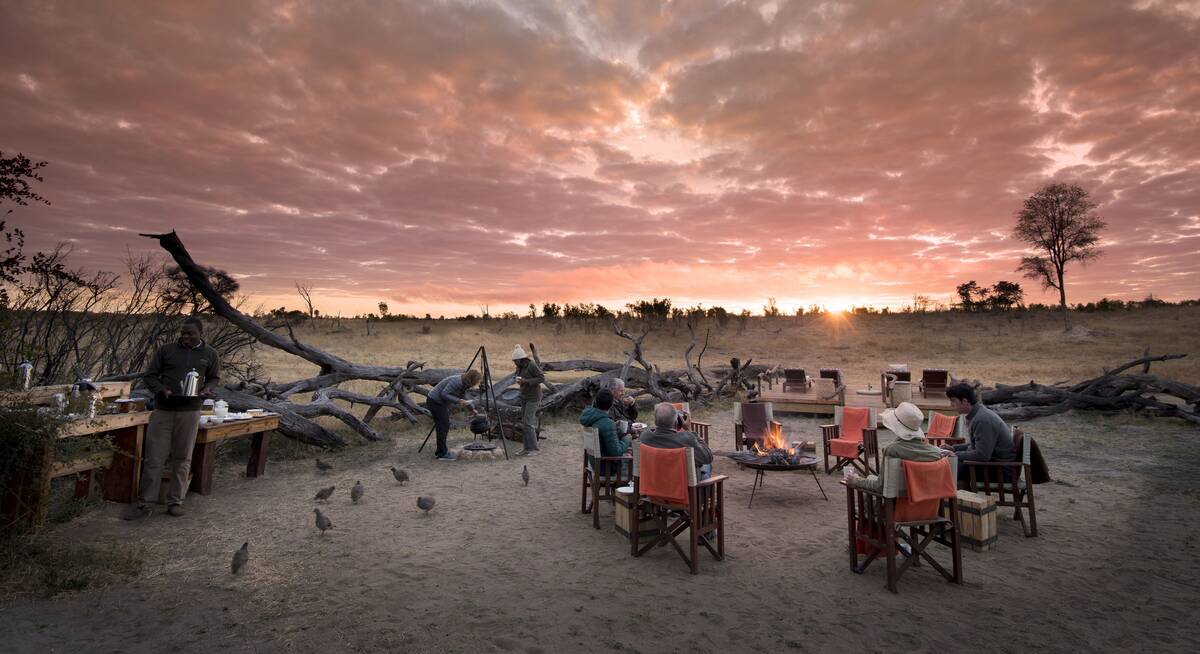
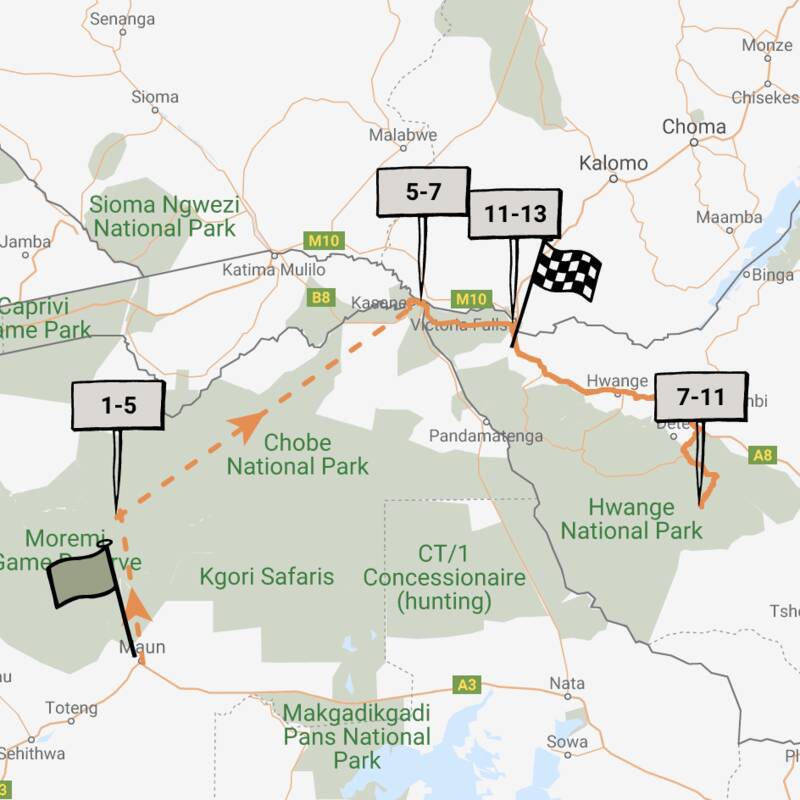
Great Egret Safari
12 days • 4 locations • 3 country
MAUN AIRPORT TO VICTORIA FALLS AIRPORT
This wonderfully varied adventure combines Botswana's Okavango Delta and a live-aboard houseboat safari on the Chobe River, with big game in Zimbabwe's dry Hwange National Park and the stupendous Victoria Falls.
Visiting Caprivi Strip, Okavango Delta and 2 other areas
US$10,400 - US$17,460 per person
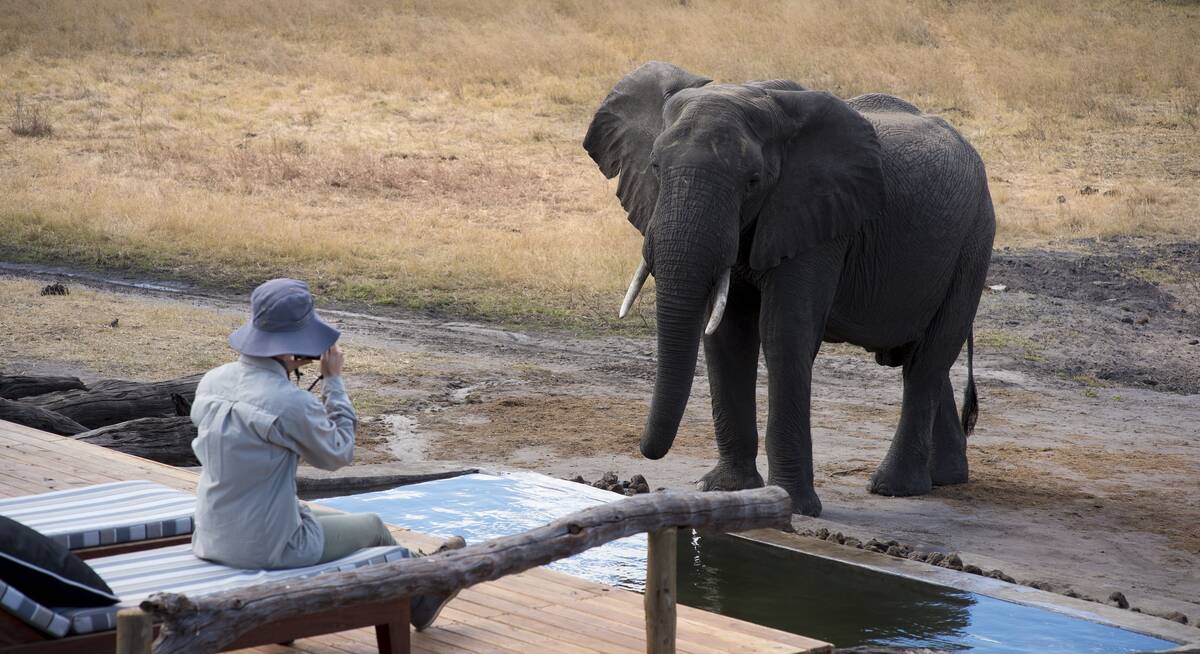
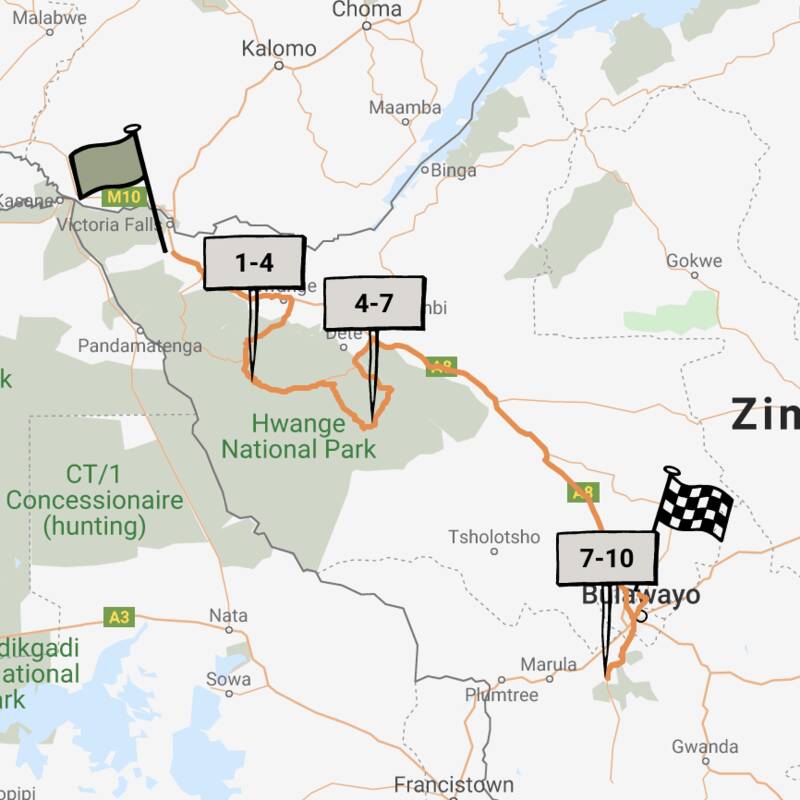
Ground Hornbill Safari
9 days • 3 locations • 1 country
VICTORIA FALLS AIRPORT TO BULAWAYO AIRPORT
This Zimbabwean odyssey explores Hwange National Park from two small camps, renowned for their great guiding, before ending with insights into cultural history, a little luxury and first-class rhino tracking in the Matobo Hills.
Visiting Matobo, Hwange
US$5,540 - US$8,560 per person
Somalisa Expeditions: Our full report
A reinvention of a classic Hwange safari camp, Somalisa Expeditions opened at the start of 2017.
The camp sits among a grove of acacia trees in a private, 150km² concession in the heart of Hwange National Park, and offers a friendly if relatively simple safari experience.
Just a kilometre or so from its more luxurious sister camps, Somalisa Camp and Somalisa Acacia, Somalisa Expeditions is an almost exact replica of the original Somalisa Camp (now refurbished to be one of the most luxurious properties in the park), and aims to deliver a simpler, more traditional safari experience than either of its siblings. Despite being the newest of the three, Expeditions – with its relaxed atmosphere, quality service, and intimate bushcamp feel – has quickly become one of our favourite camps in the park.
Although the six tented rooms here are the same that were originally at Somalisa Camp, they certainly don’t feel tired. Rather the reverse: we thought they looked great when we stayed here in November 2017. The tents – two of them combining to form a family tent – are built on raised wooden platforms along a tree line that marks the bank of an ephemeral river. These usually dry riverbeds are used by wildlife as natural paths through the park, and on our last stay, we were treated to a large male lion roaring outside our tent, silhouetted by the light of the moon: a spectacular way to be woken up. To make the most of any wildlife sightings in the riverbed during the day, each tent has a small veranda with directors’ chairs.
Inside the tents, polished wooden floors and green canvas walls exude a rustic, natural feel, balanced by some smart and stylish teak furnishings, while mesh windows allow light and fresh air into the room. The semi-outdoor en-suite bathroom at the back of the tent is a slightly more solid structure of wood and corrugated metal, with a space between the walls and the canvas roof. Despite simple building materials and the presence of a plumbed shower, flush toilet, copper fittings, lavish toiletries and fluffy towels instil their own charm and feeling of comfort.
Back in camp, Somalisa Expeditions’ main area matches the simple but stylish design of the tents, with its lounge and dining area on a raised wooden deck. A former swimming pool provides welcome relief from the heat for the park’s famous elephant herds, which much prefer the crystal clear water to that in the more natural waterhole in front of camp.
Activities from Somalisa Expeditions – game drives and walking safaris – usually take place within the concession, but can also venture further into Hwange. All are led by fully licensed, knowledgeable and, in our experience, enthusiastic guides. Our guide didn’t mind staying with us in the rain to watch lion on a kill; in fact I’d say he almost encouraged it.
Throughout our stay, we were impressed the by the relaxed yet attentive service of our hosts. There was no hint of the stiff, overly formal atmosphere that can prevail in some camps; here it felt as though they were genuinely enjoying getting to know the guests and were happy to be there. One of the hosts even accepted an invitation to join us on one of our game drives.
Activities
4WD Safari
Birdwatching
Guided walking safari
Night drive
Private activities
Families & children
- Attitude towards children
- Somalisa Expeditions accepts children aged 12 and over.
- Property’s age restrictions
- Children over the age of 12 years are welcome at Somalisa Expeditions. However, the walking safari activities are restricted to children aged 16 years and over.
- Special activities & services
- None.
- Equipment
- Two of the tents at Expeditions share a deck, forming a family tent.
- Generally recommended for children
- Families with children under 16 would be better placed at Somalisa Acacia.
- Notes
- Somalisa Expeditions is an open safari camp, deep in the bush, with dangerous big game often passing through. The swimming pool is also unfenced. Children must be under parental supervision at all times.
Food & drink
- Usual board basis
- Full Board & Activities
- Food quality
- When we’ve stayed at Expeditions, the food has been excellent – light meals in the heat of the day and more substantial fare in the evenings. As always on safari it’s unlikely you’ll go hungry here.
Breakfast is the usual buffet served before your early-morning activity. There is an extensive range of cereals, porridge, juices, cold meats, cheeses, fruit, fresh bread and muffins, with a hot breakfast cooked to order.
Lunch is a relatively flexible meal. It’s usually taken on return from your morning activity, but when we arrived late from another camp they were happy to whip up an enjoyable light lunch of fish with salad and bean falafel followed by home-made ice cream.
After your siesta and before your afternoon activity, high tea - with sweet and savoury snacks – doubles as a time to meet up with your guide and other guests before heading out into the park.
Dinner is a sit down, three-course meal, usually taken communally with guides and senior staff joining guests. Following carrot soup to start, we had an expertly cooked steak with mushroom sauce served with baked potatoes, roast butternut squash and courgette. Dessert was a fantastic apple crumble with custard. - Dining style
- Mixture of group dining and individual tables
- Dining locations
- Indoor and Outdoor Dining
- Further dining info, including room service
- Meals in the bush, by the pool or on your room’s verandah can be arranged on request – with advanced notice.
- Drinks included
- All drinks stocked at Expeditions are included – beers, South African wines and soft drinks – but note that no drinks imported from outside Africa (eg: champagne) are available.
As part of Somalisa’s drive to be eco-friendly, all guests are gifted an aluminum water bottle that they can fill up as needed during their stay with fresh filtered water – thus obviating the use of numerous plastic water bottles.
Our travellers’ wildlife sightings from Somalisa Expeditions
Since mid-2018, many of our travellers who stayed at Somalisa Expeditions have kindly recorded their wildlife sightings and shared them with us. The results are below. Click an animal to see more, and here to see more on our methodology.

100% success

100% success

100% success

94% success

87% success

87% success

87% success

80% success

73% success

64% success

50% success

43% success

40% success

20% success

17% success

7% success

0% success

0% success
Getting there
- Location
- Hwange National Park, Zimbabwe
- Ideal length of stay
- A three- or four-night stay at Expeditions is ideal for most visitors, and would combine well with a stay in Victoria Falls town. Some visitors choose to link a stay here with one or more of its sister camps, which include Kanga Bushcamp and Zambezi Expeditions in Mana Pools or Linyanti Tented Camp and Khwai Tented Camp in Botswana.
- Directions
- Somalisa Expeditions can be reached by road from Victoria Falls. This fairly economical option takes about 3½ hours: 90 minutes on tarred road followed by about two hours on a game-drive vehicle through Hwange National Park (the second part of the journey may take longer, depending on what you see on route). Alternatively, you fly into the nearby Manga airstrip, then it's about a half-hour game-drive transfer to the camp.
- Accessible by
- Fly-and-Transfer
Communications
- Power supply notes
- The camp is run primarily on solar power, but has a back-up generator. Battery-charging facilities are available in the main area and in guest tents.
- Communications
- There is no cellphone signal or WiFi at Somalisa, but the camp can communicate by satellite phone in case of emergency.
- TV & radio
- No facilities available
- Water supply
- Borehole
- Water supply notes
- Water from the borehole is filtered multiple times, and provides clean and fresh-tasting drinking water.
Health & safety
- Malarial protection recommended
- Yes
- Medical care
- There is a basic first-aid kit on site, with both managers and guides trained to use it. The nearest doctor is in Hwange town, about two hours' drive away. A medical air rescue service (MARS) covering Hwange is available in the event of serious illness/injury.
- Dangerous animals
- High Risk
- Security measures
- Guests are accompanied to and from their tents after dark by a guide. Air horns are provided in each tent to attract attention in case of emergency.
- Fire safety
- There is a fire extinguisher outside each tent and in the main area.
Useful info
- Disabled access
- On Request
- Laundry facilities
- There is a complimentary laundry service included, with the exception of underwear, for cultural reasons. Washing powder is provided in each room for guests who wish to hand wash these, and any delicate items, themselves. Laundry submitted in the morning is usually returned the same day, weather permitting.
- Money
- Each room has a small electronic safe for valuables.
- Accepted payment on location
- As everything here is pre-paid, there should be no need to pay for anything. We recommend that any tips are offered in US dollars.
Plan and book your trip with Expert Africa
All of our trips are tailor-made, so we'll always adapt them to suit you. Talk to an Expert and let us plan and arrange your perfect trip.

Talk to an Expert
Call or email us now! We’ll match you with the Specialist in our team who is best suited to help you. Then together we can start planning your trip.

Set up your itinerary
Based on our experience and your ideas, your specialist will create a detailed, costed itinerary. We’ll refine it together, until we have a trip that you’re perfectly happy with.

Prepare for your trip
The same Specialist will make the seamless arrangements for your trip, send you detailed travel documents, and be available to answer any questions before you depart.

Travel with peace of mind
After you set off, you’ll be cared for by our partners in Africa, most of whom have worked with Expert Africa for decades. And if you ever need us urgently, we’re available 24/7.

When you return
We love to learn about your trip, and so will always be grateful if you’ve the time to give feedback to your Specialist when you return.
Somalisa Expeditions's location
Look closer at the environment and surroundings of Somalisa Expeditions.
Other lodges in Hwange National Park
Alternative places to stay in this same area.
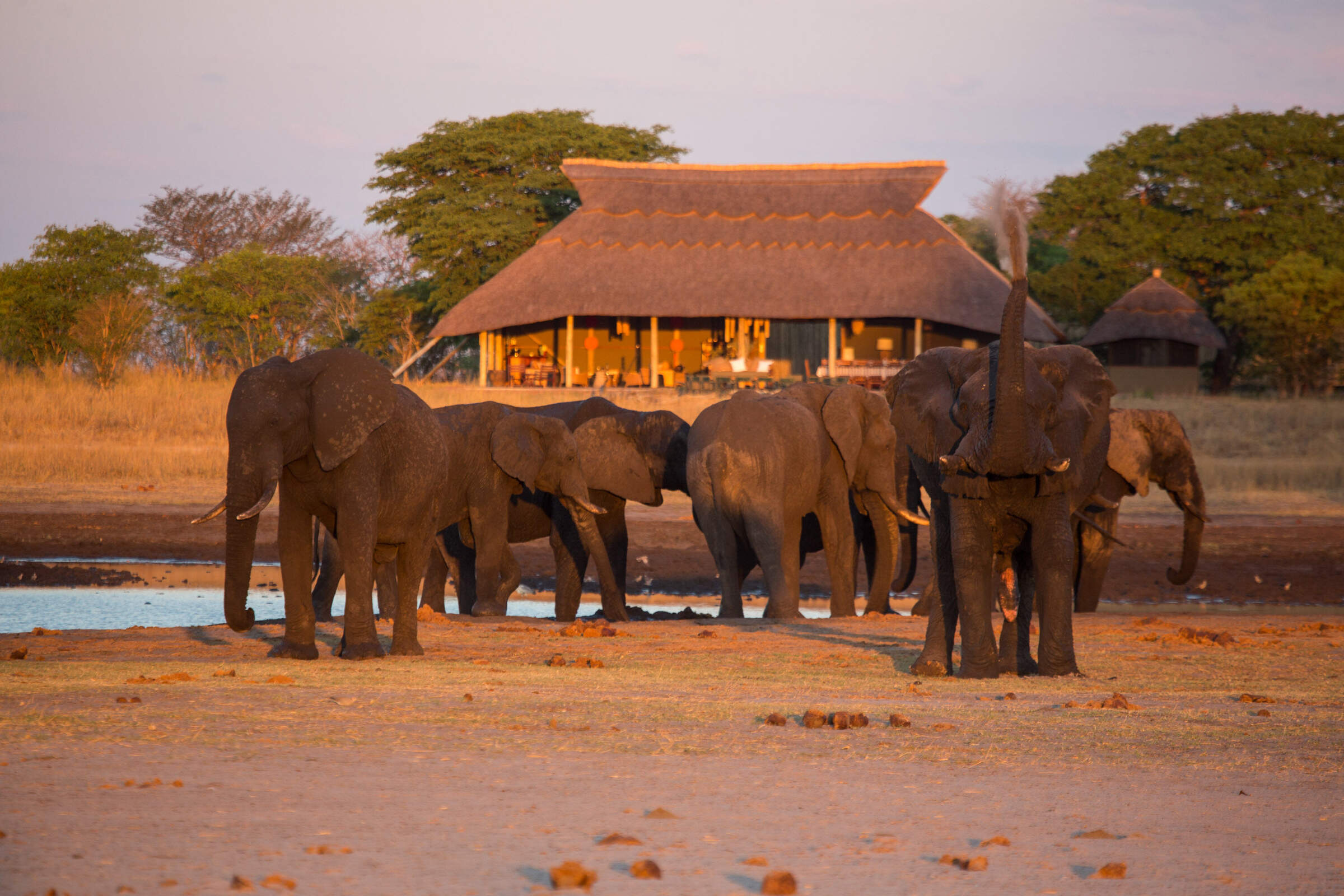
Camp Hwange
Overlooking a waterhole in a remote part of Hwange National Park, Camp Hwange offers great guiding in a pristine wilderness at reasonable prices.
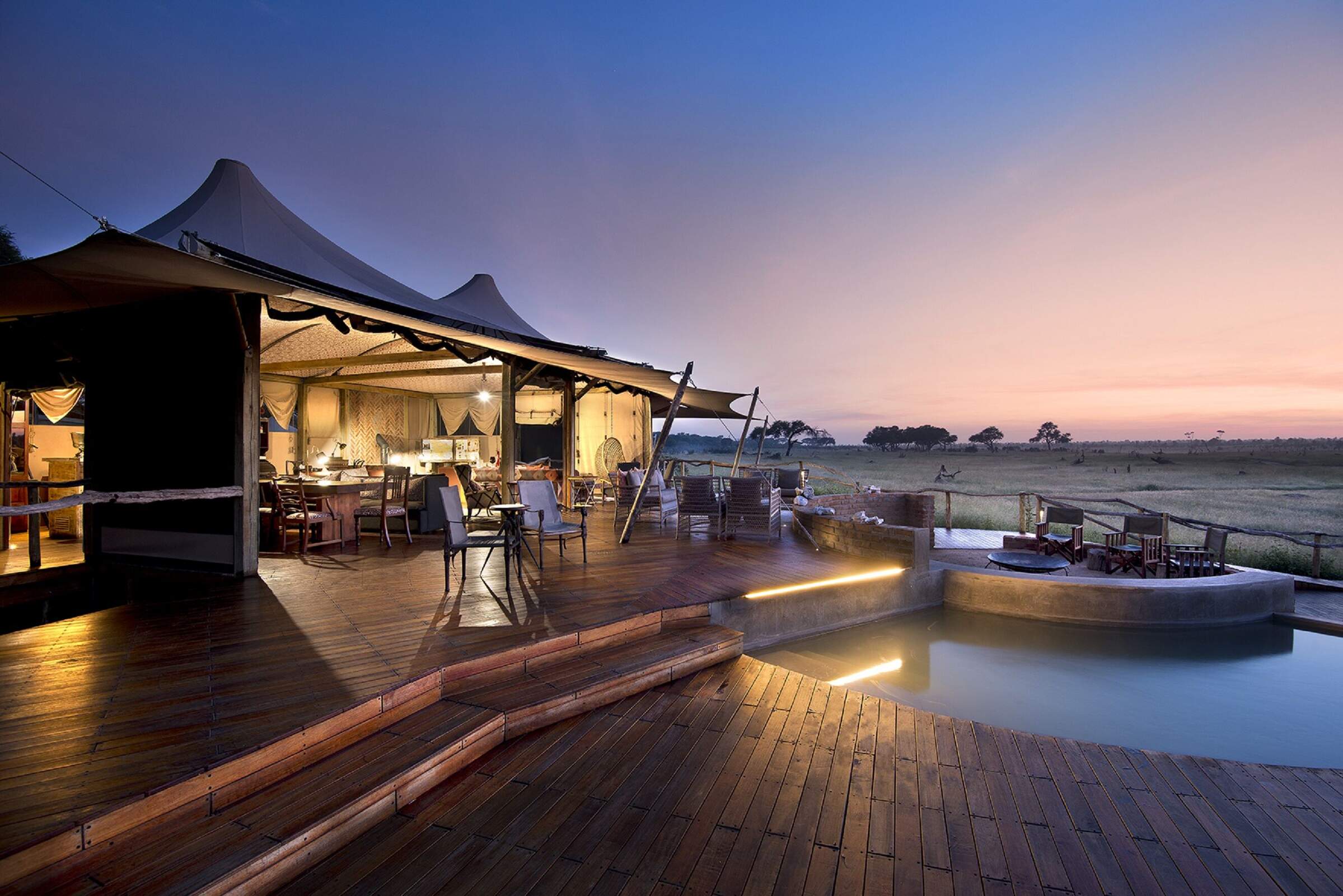
Somalisa Camp
Somalisa is a luxurious, yet remote, safari camp in Hwange National Park, offering walking safaris and game drives.
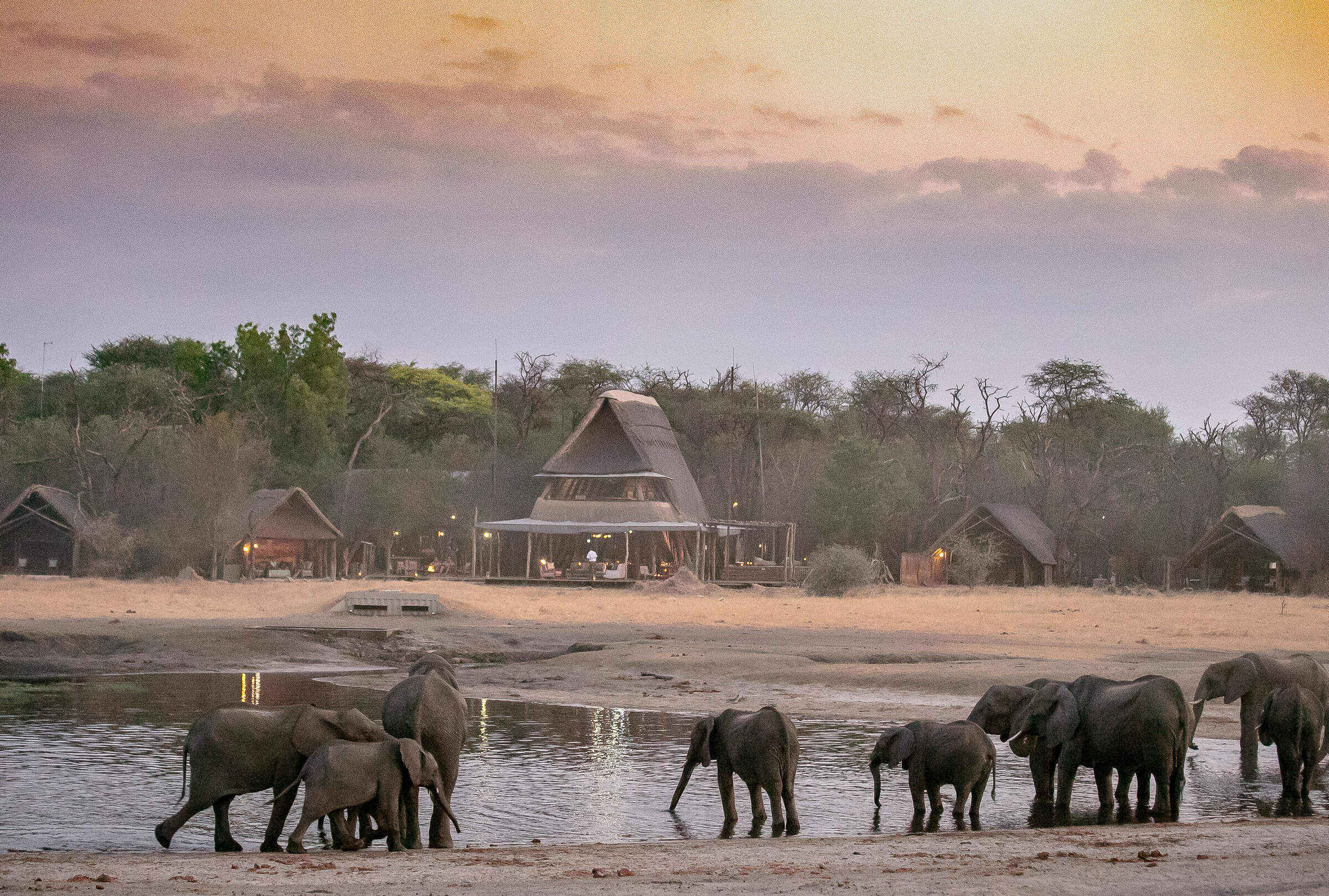
The Hide
Located in a small, private concession, The Hide is a relaxed and comfortable camp offering submerged hides and great family accommodation.
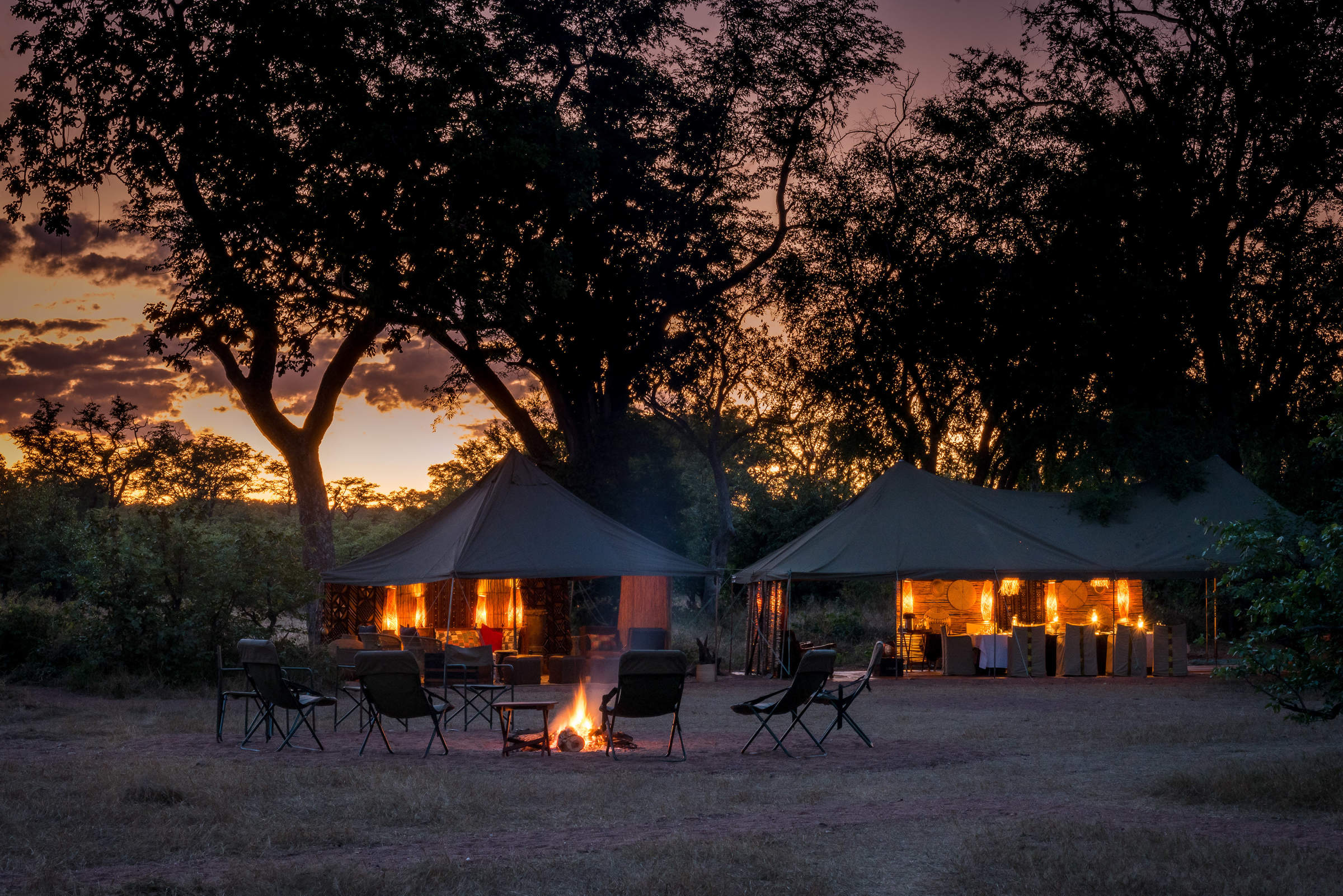
Hwange Bush Camp
Hwange Bush Camp is a small seasonal camp offering comfortable tents, great food, and superb guiding, and is often used by exclusive groups.
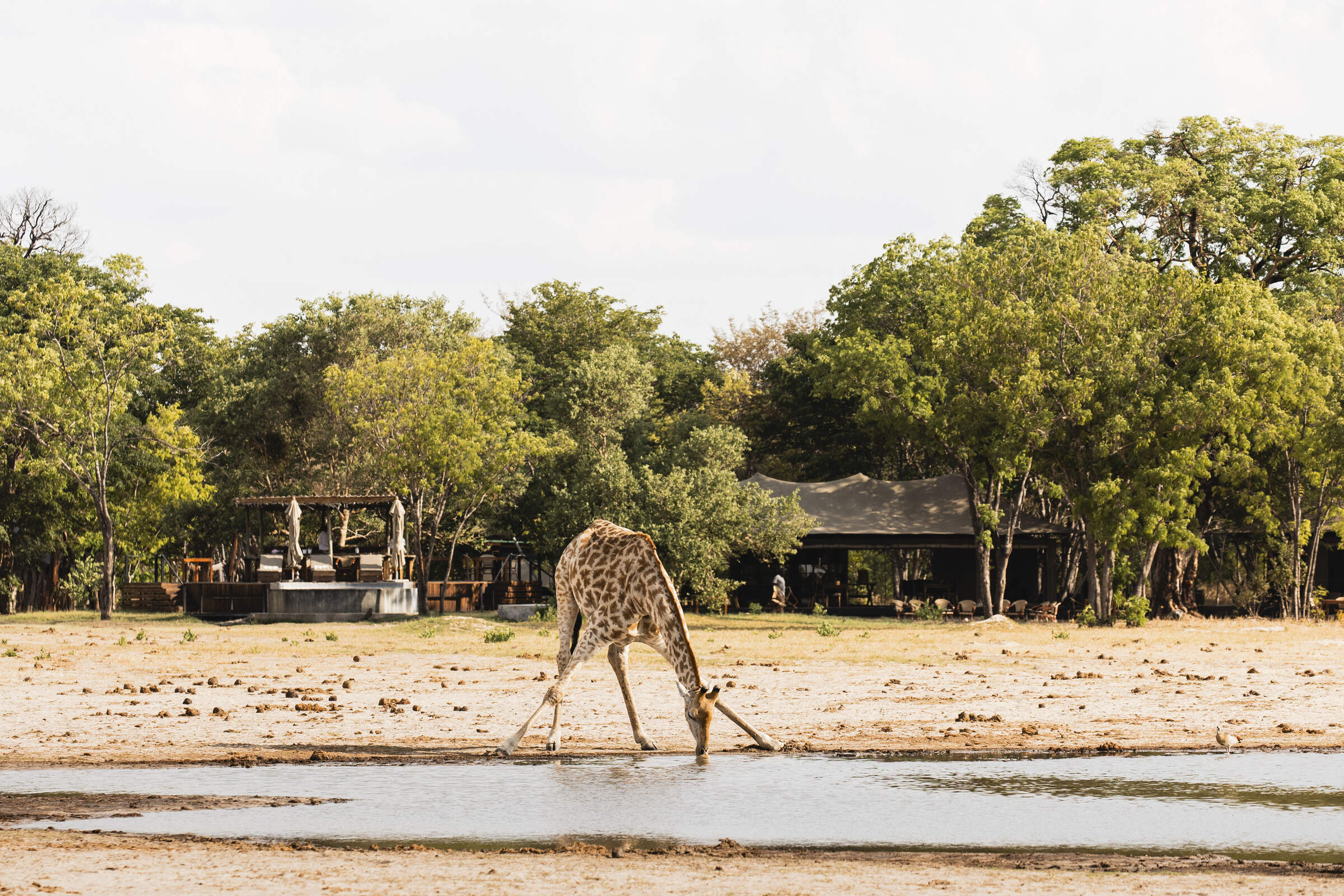
Little Makalolo Camp
Tucked away in Hwange National Park overlooking a waterhole, Little Makalolo Camp combines top guiding with excellent wildlife watching.
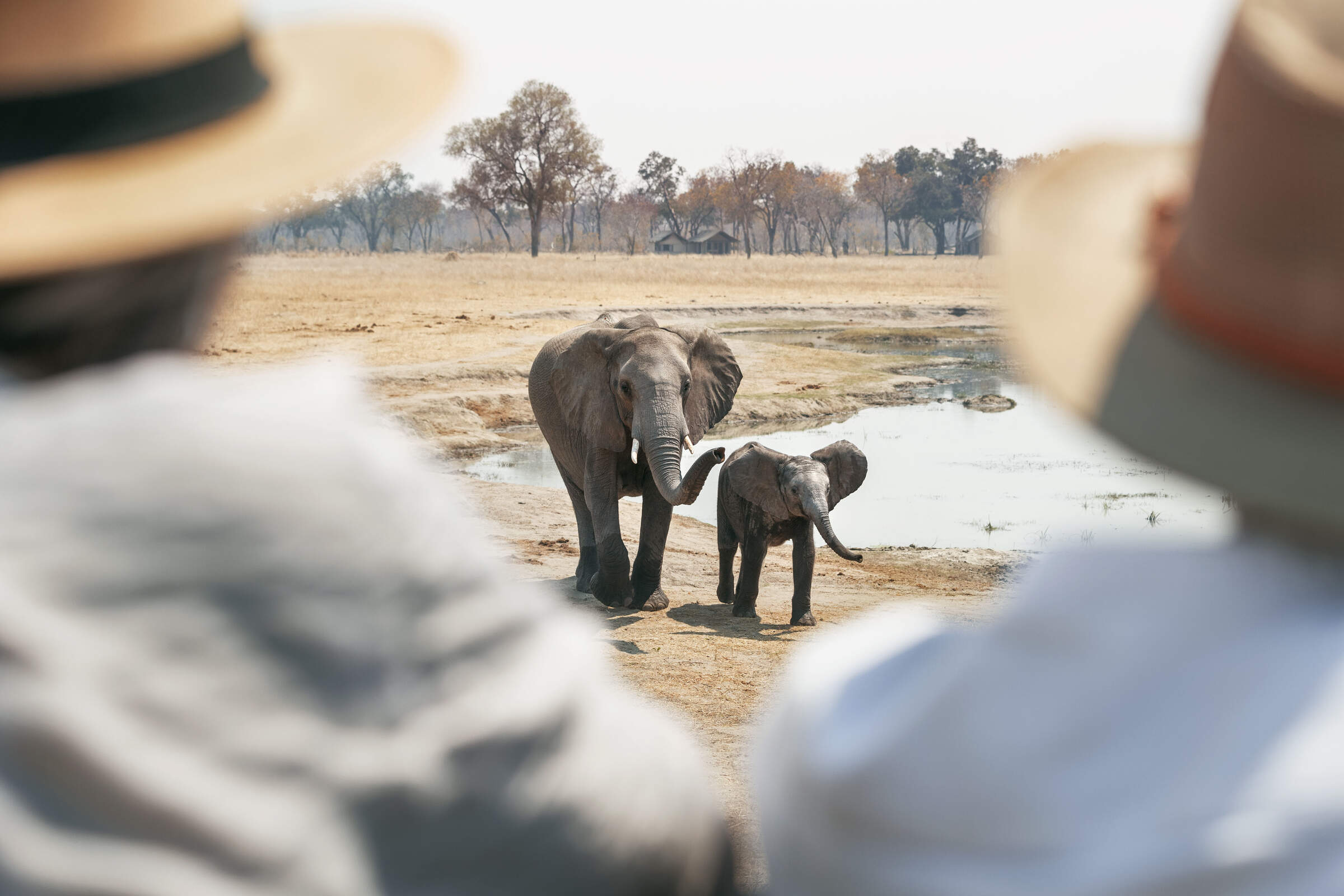
Davison's Camp
Within the Linkwasha Concession, Davison's Camp offers superb value for money, morning walking safaris and spot-lit drives after dark.
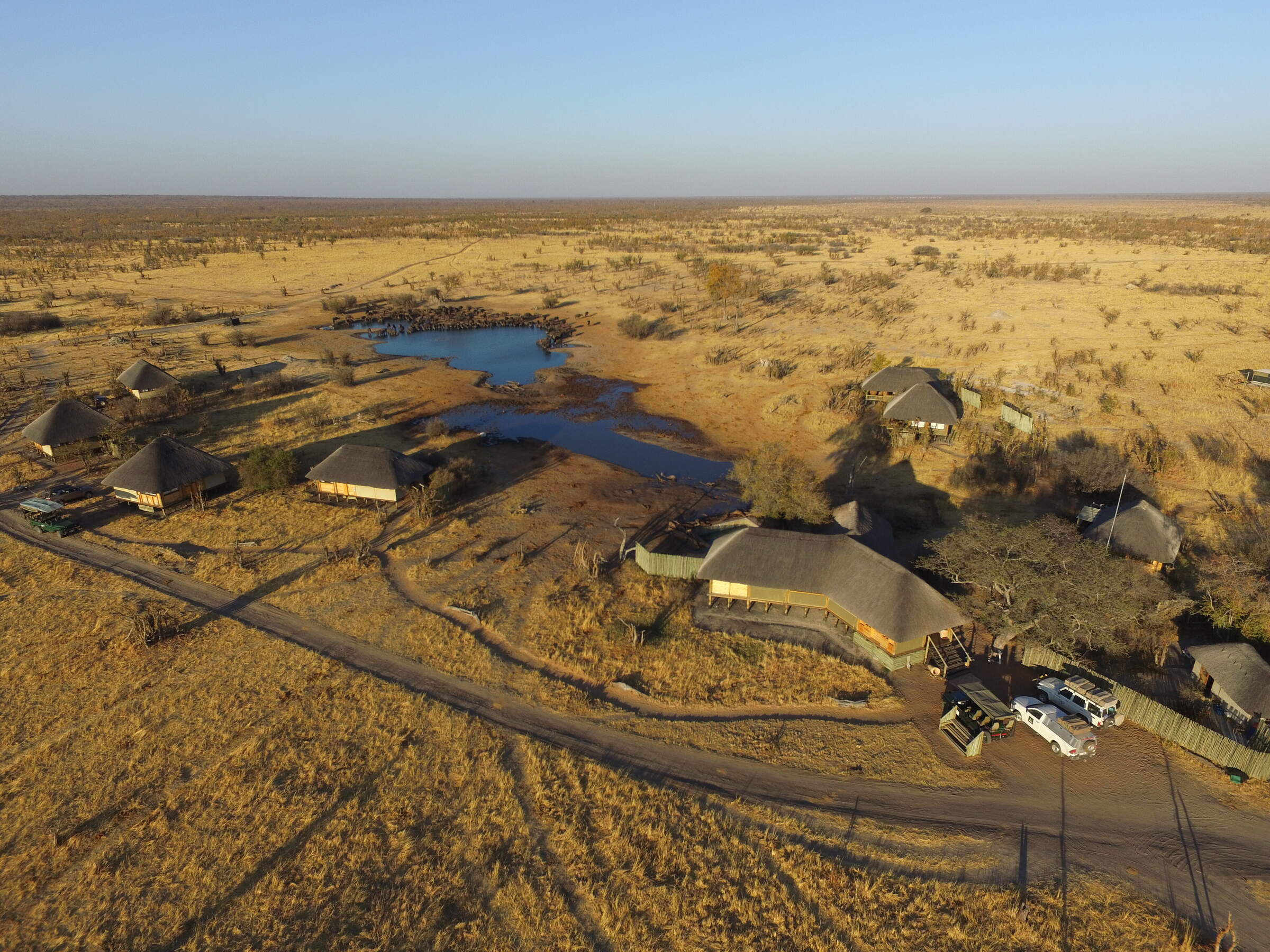
Nehimba Lodge
Nehimba is a comfortable, good-value camp in a remote area of Hwange National Park, teeming with wildlife.
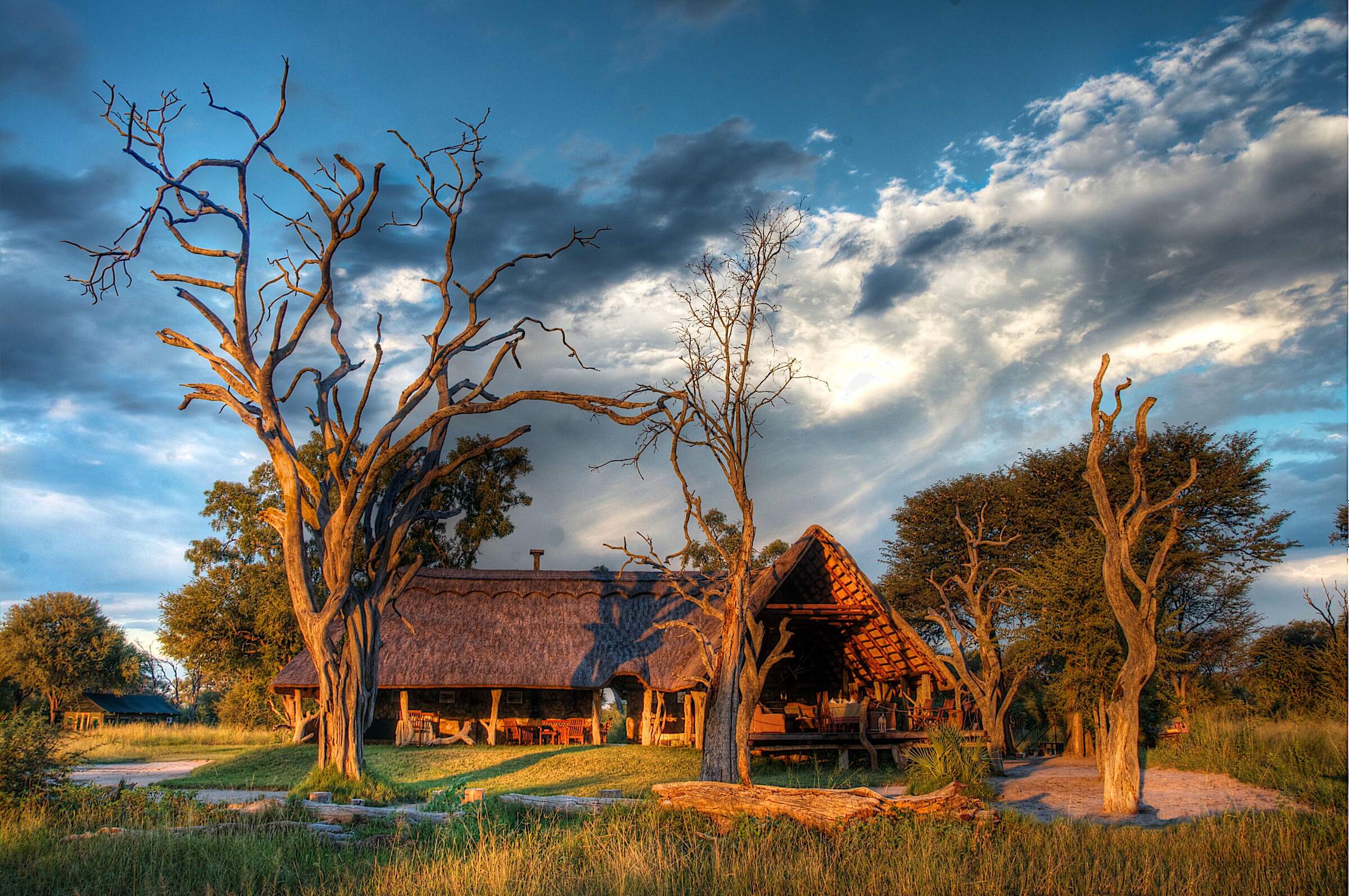
Bomani Tented Lodge
Bomani is a down-to-earth lodge with a range of activities in a remote region of western Zimbabwe, adjacent to Hwange National Park.
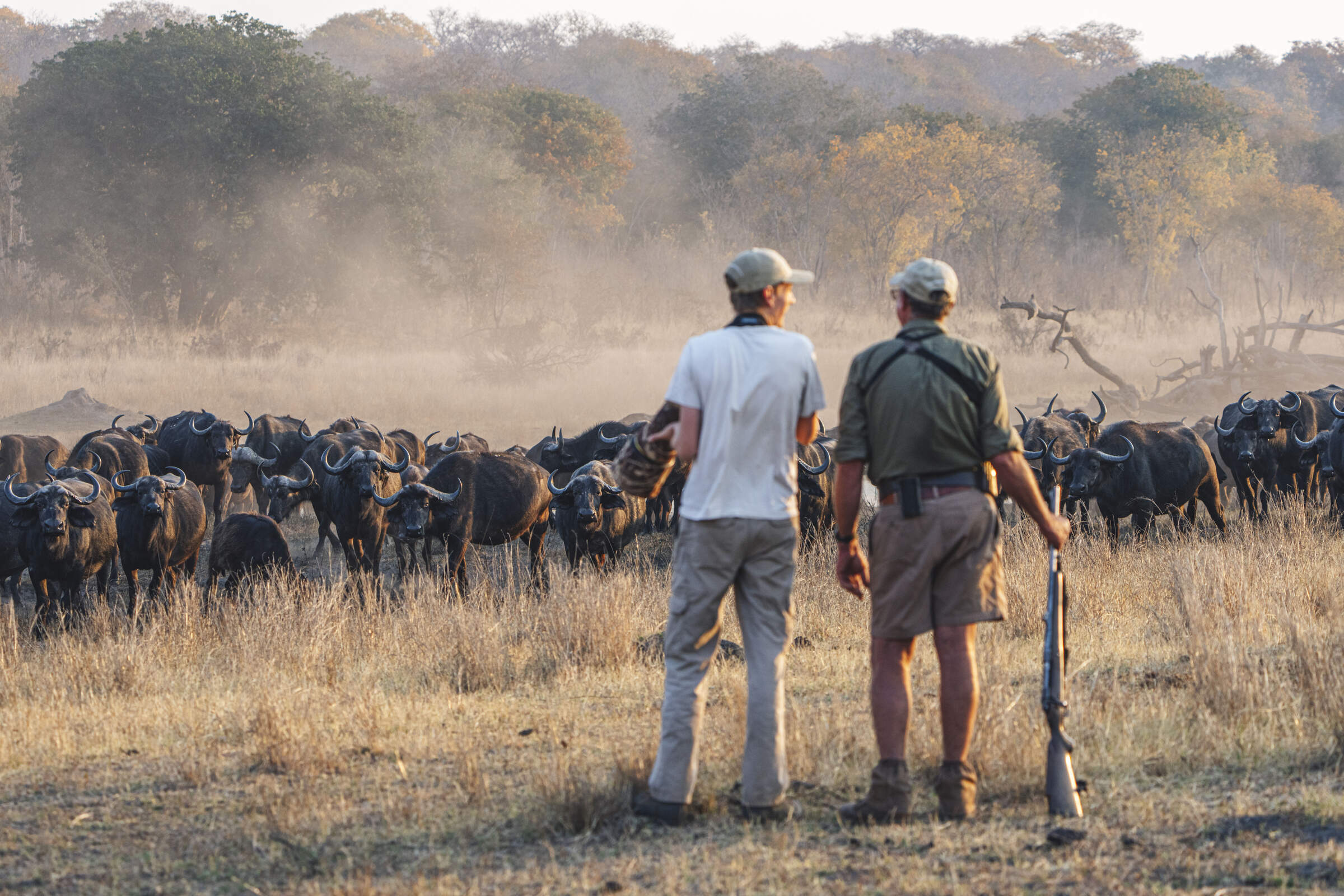
Khulu Bush Camp
Just outside Hwange National Park, Khulu Bush Camp features a waterhole popular with wildlife, especially elephants and offers excellent value for money.
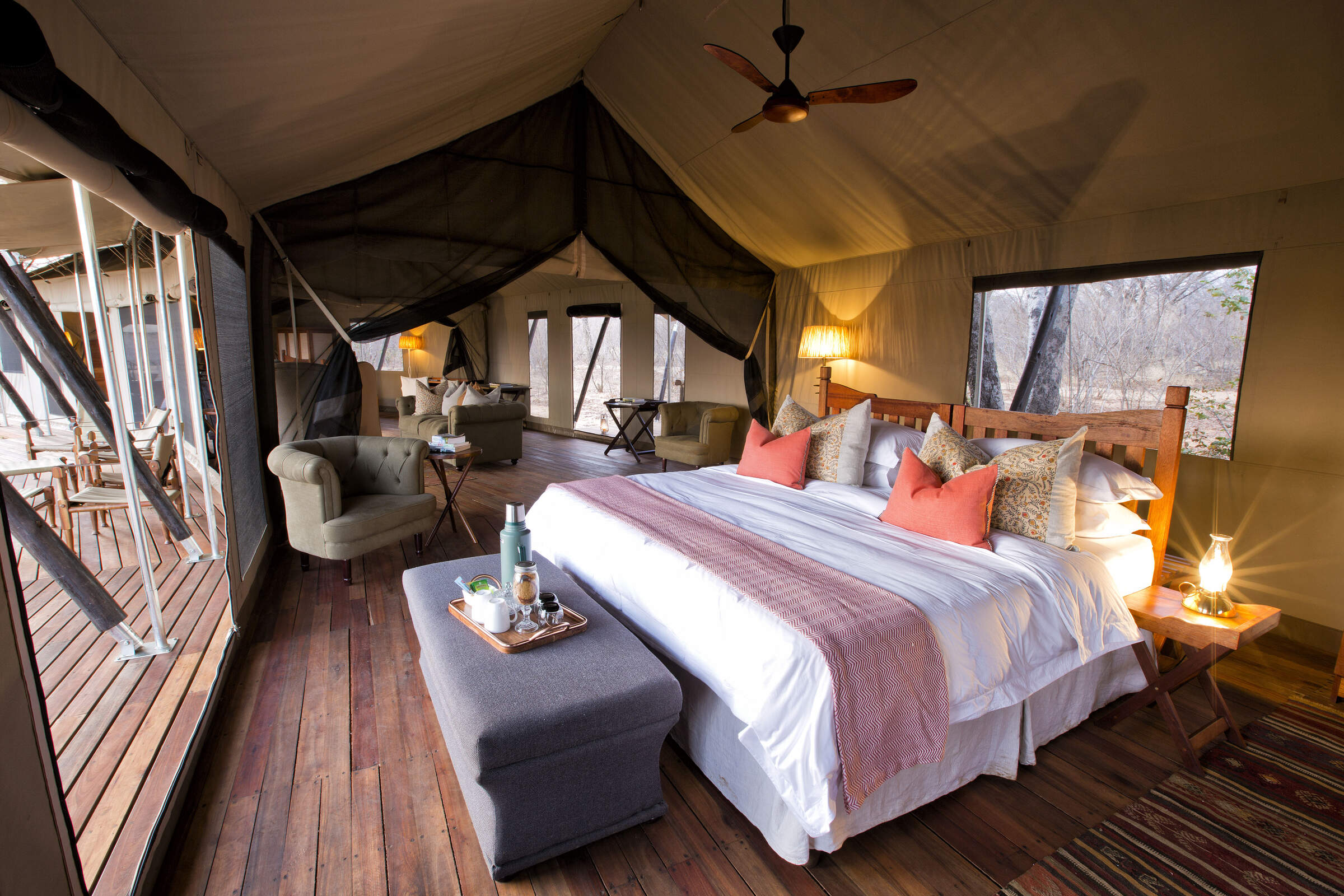
Verney's Camp
Verney's Camp is one of the newest offerings in Hwange, located in the wildlife rich, open landscape in the south-eastern section of the park.
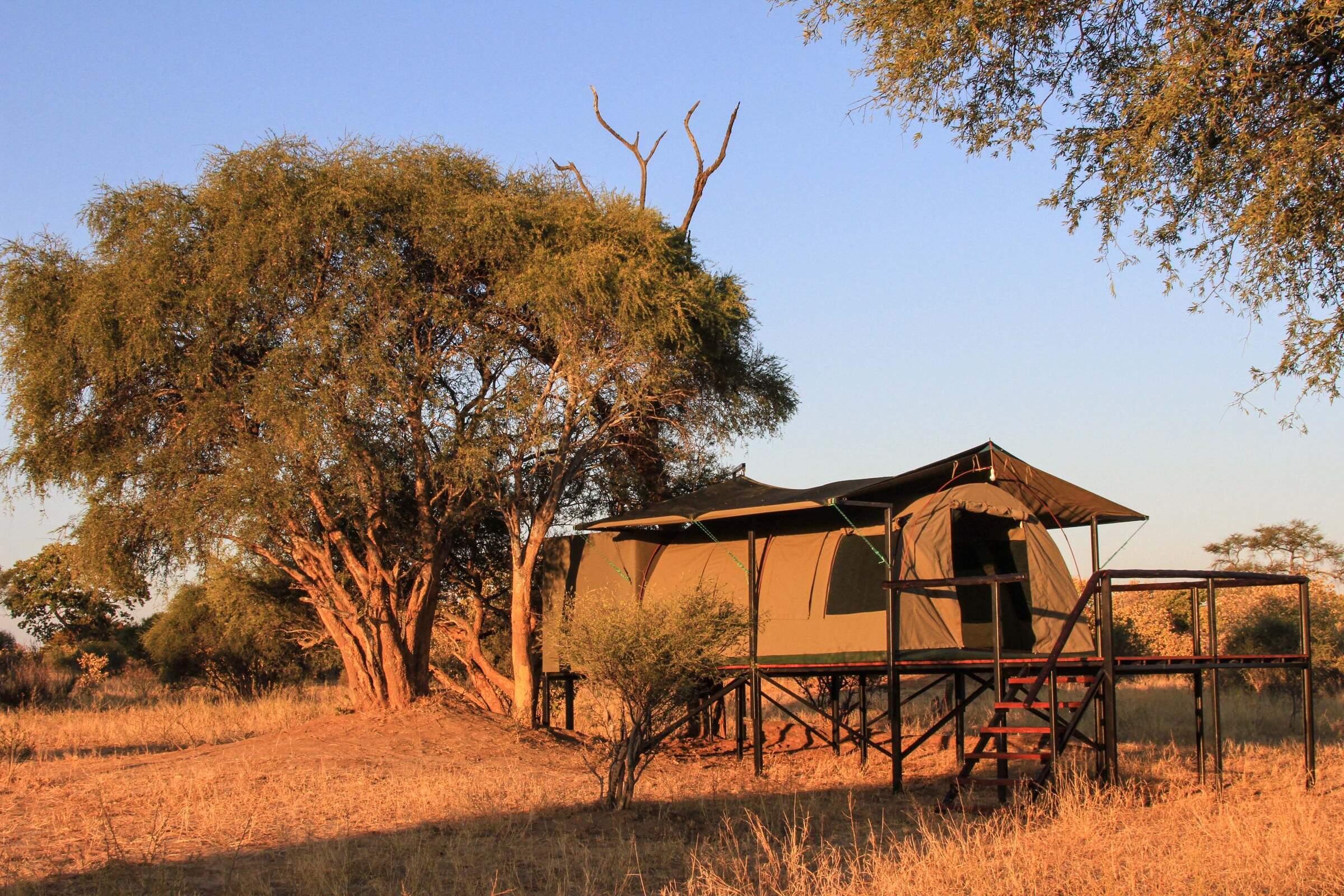
Jozibanini Camp
Remote and rugged, Jozibanini is one of the most remote camps in Zimabwe's largest National Park. Stay here for a real wilderness experience.
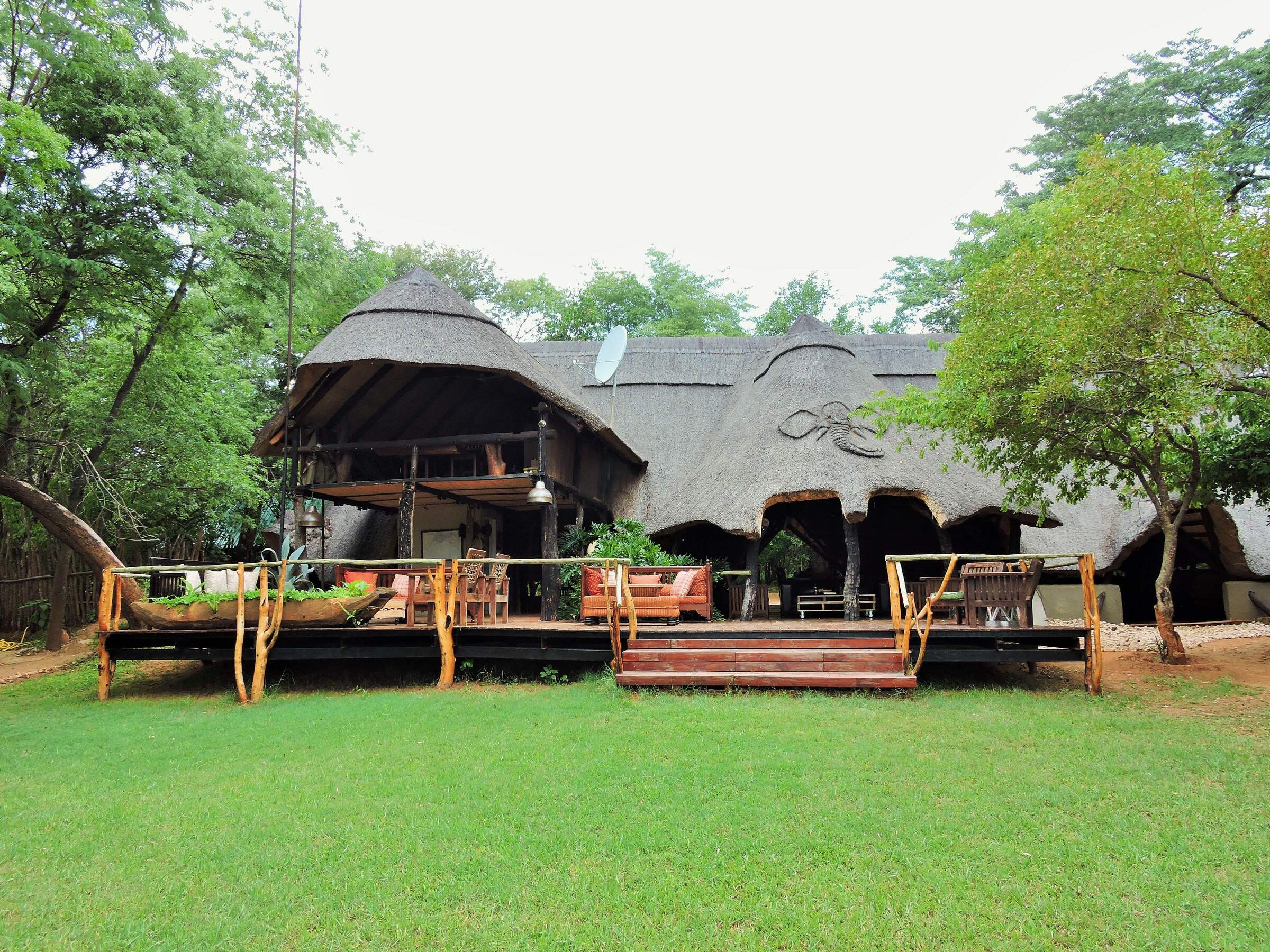
Ivory Lodge
Just outside Hwange National Park, the small Ivory Lodge is a great place to see large herds of elephant as well as smaller plains game.
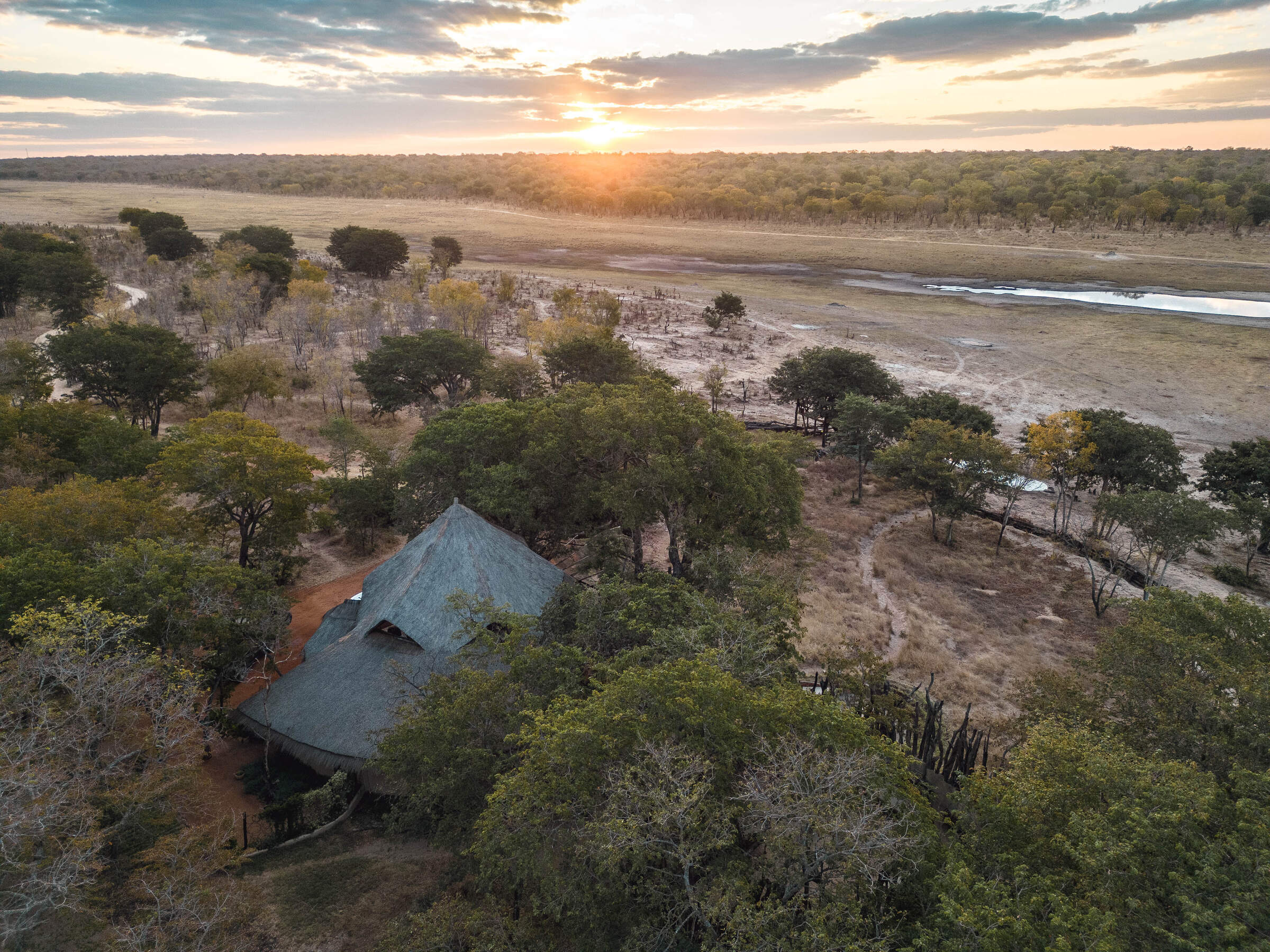
Sable Valley Lodge
Set on the 12km Dete Vlei, the recently upgraded and family-friendly Sable Valley sits in a private reserve within easy reach of Hwange National Park.
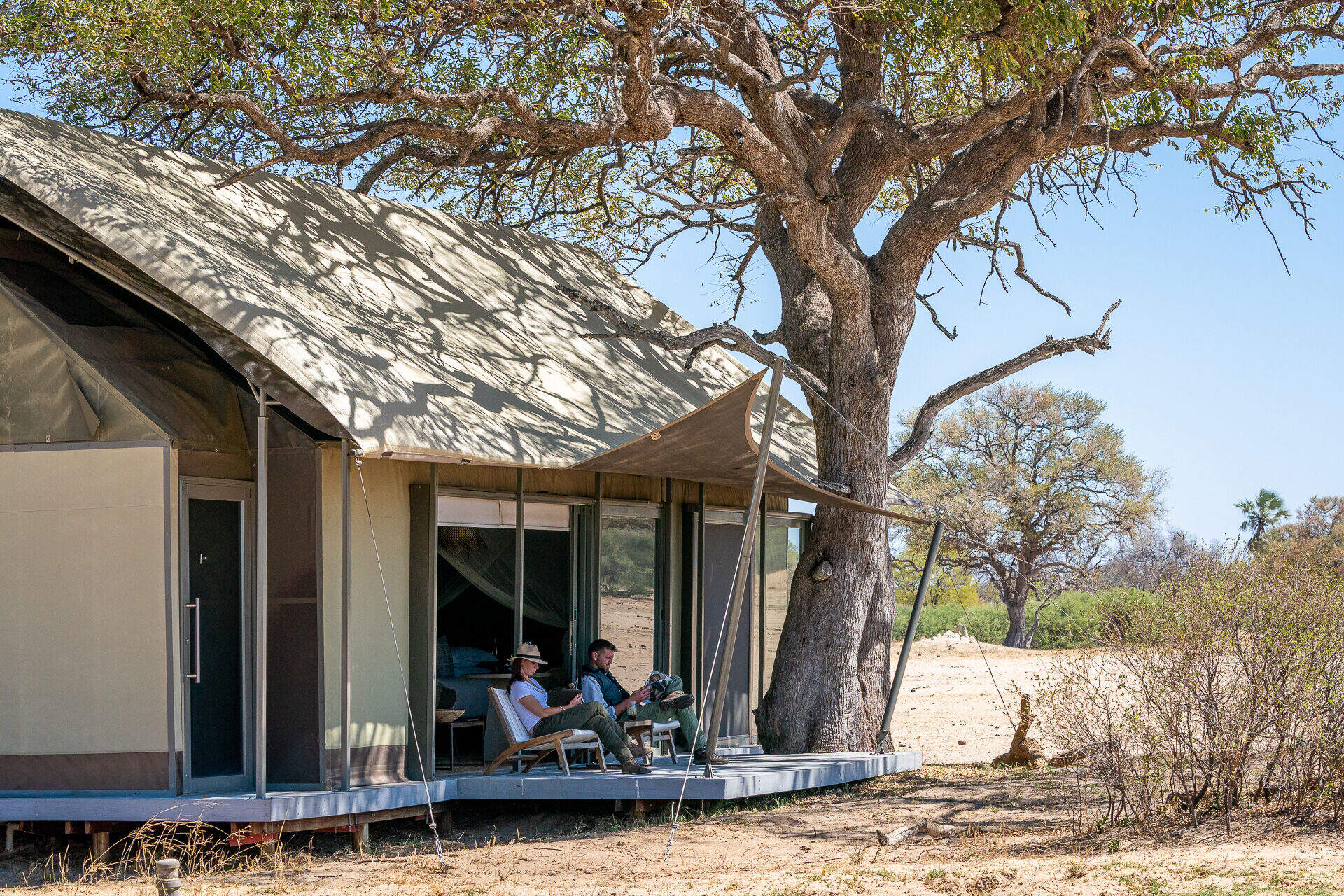
Linkwasha Camp
In its own private concession within Hwange National Park, Linkwasha offers excellent wildlife sightings and luxurious surroundings.
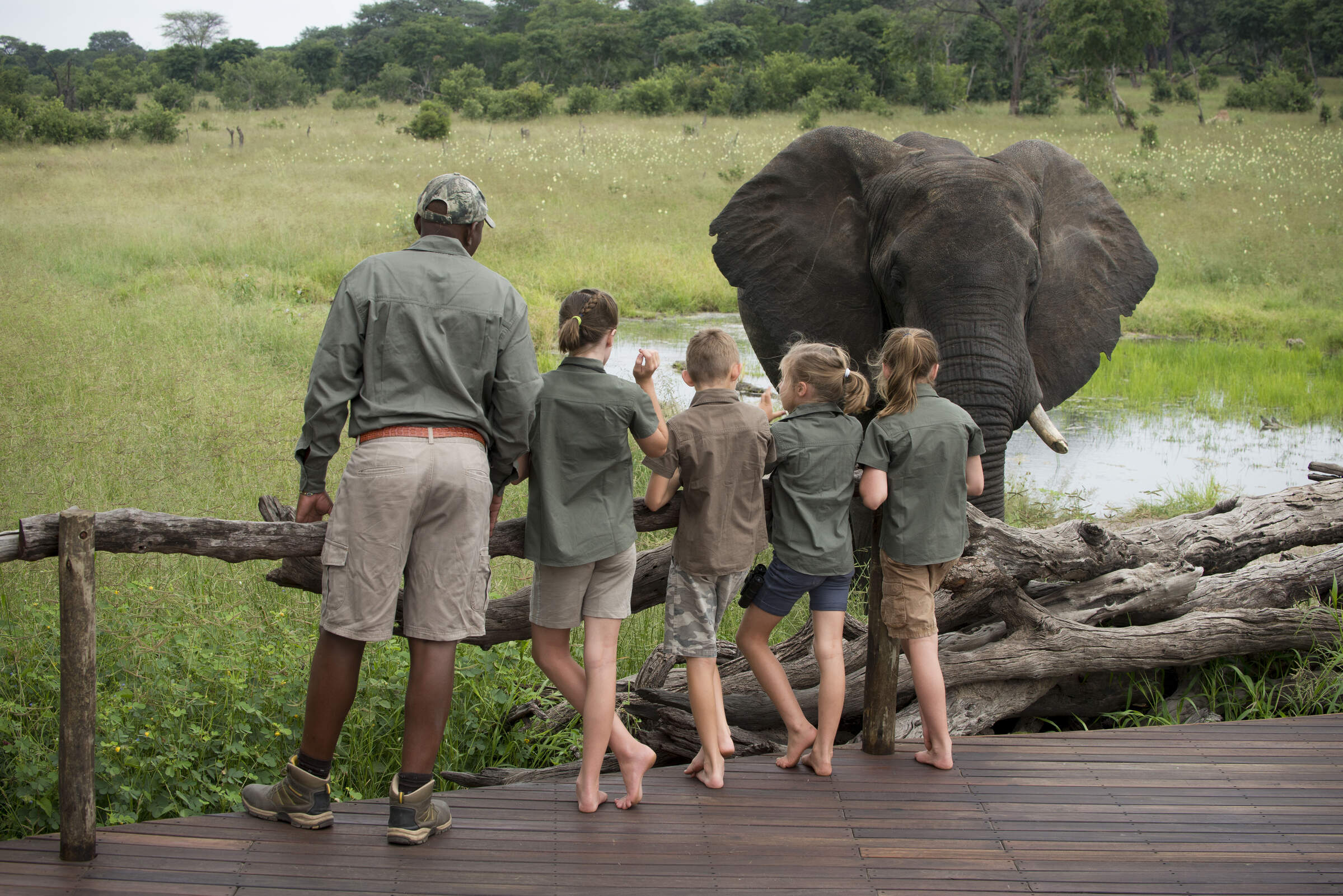
Somalisa Acacia
Somalisa Acacia is a family-friendly, yet remote and luxurious safari camp in Hwange National Park.
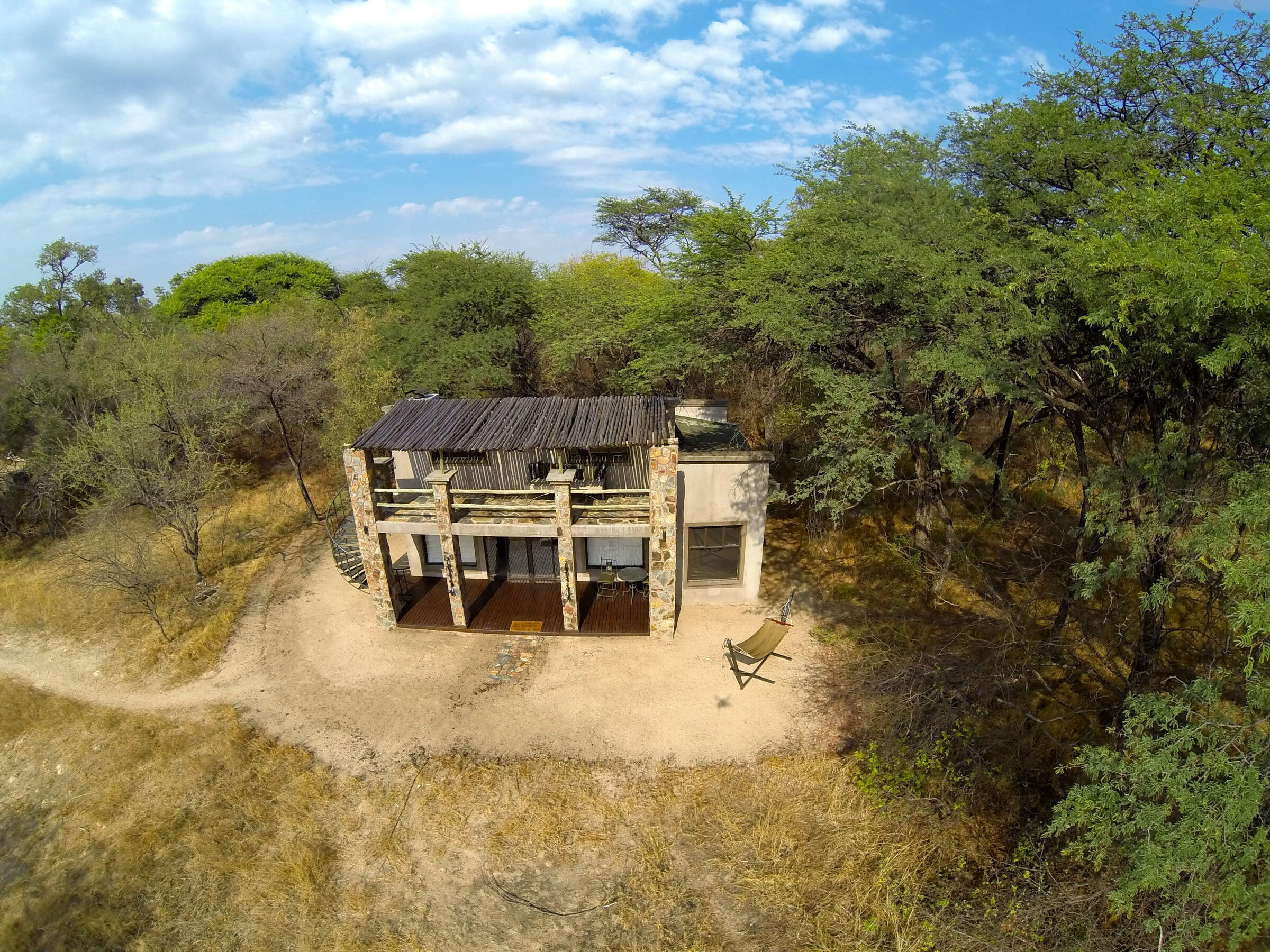
Camelthorn
Camelthorn is a stylish lodge with a range of activities in a remote region of western Zimbabwe, adjacent to Hwange National Park.
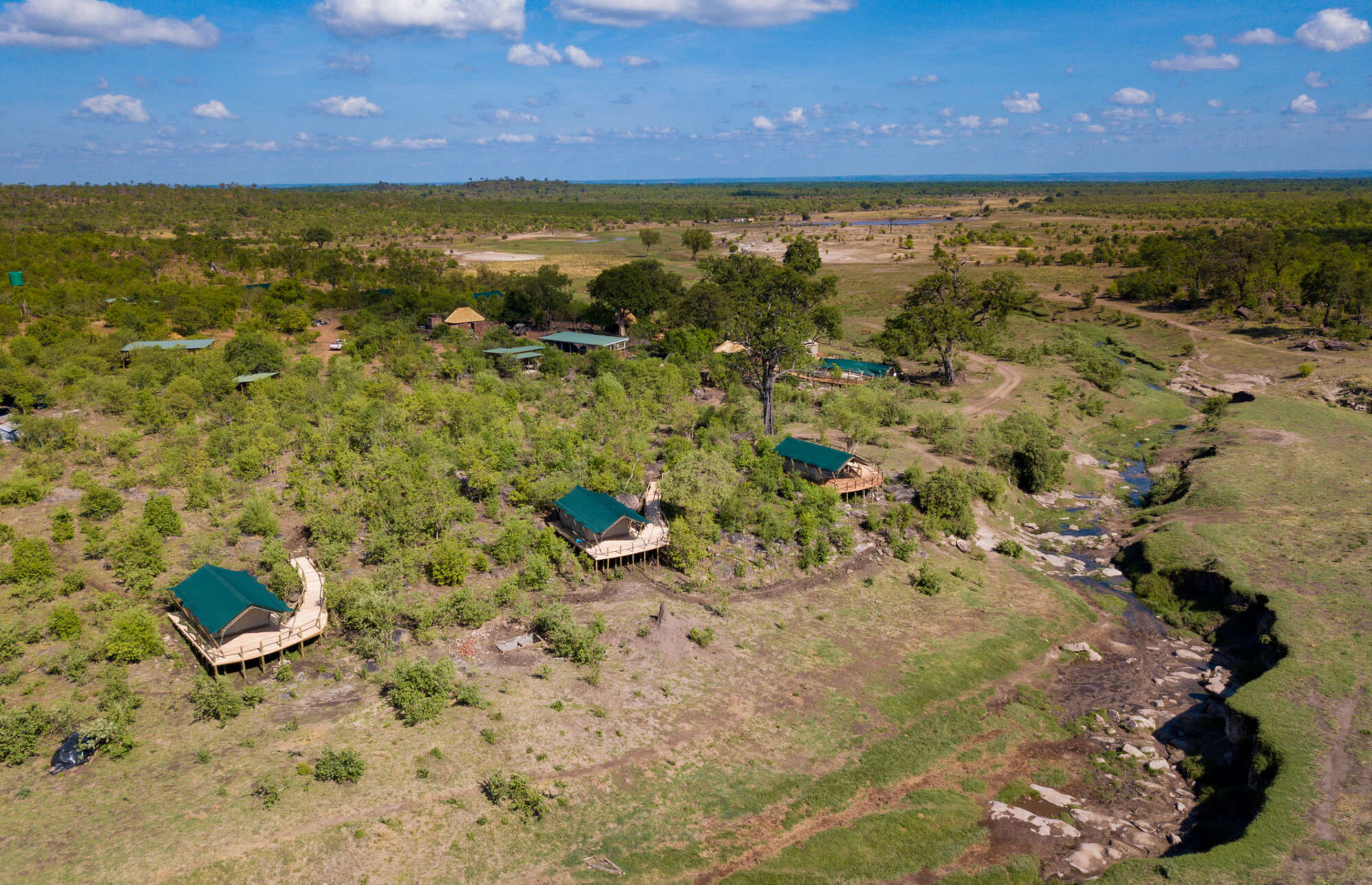
Deteema Springs Camp
In the remote north-west of Hwange National Park, Deteema Springs is a well-designed but unpretentious tented camp that offers good service and excellent wildlife potential.
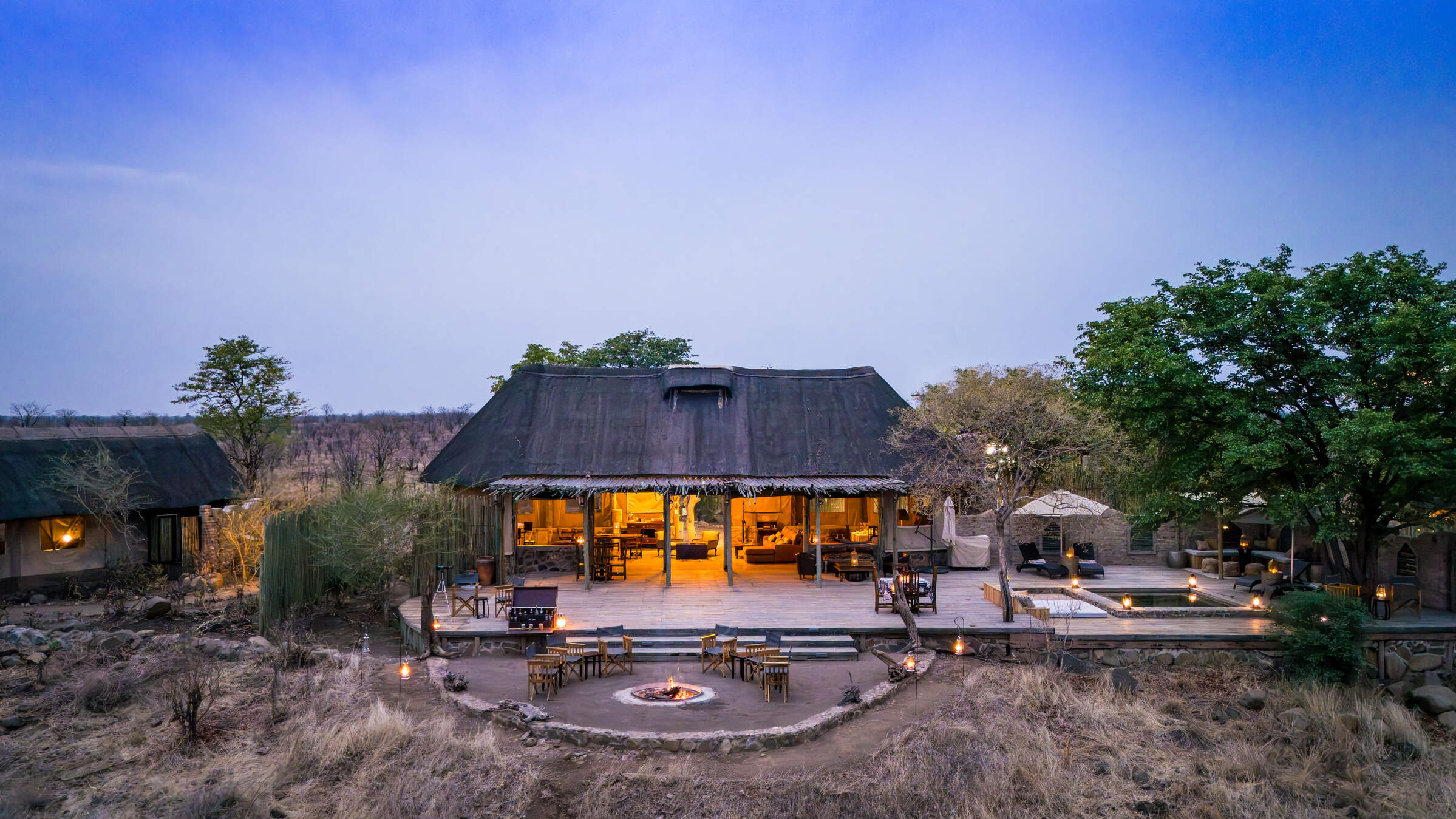
Daka Camp
One of the most remote camps in Hwange National Park, Daka Camp, like the smaller Daka Expeditions, sits almost on the border with Botswana.
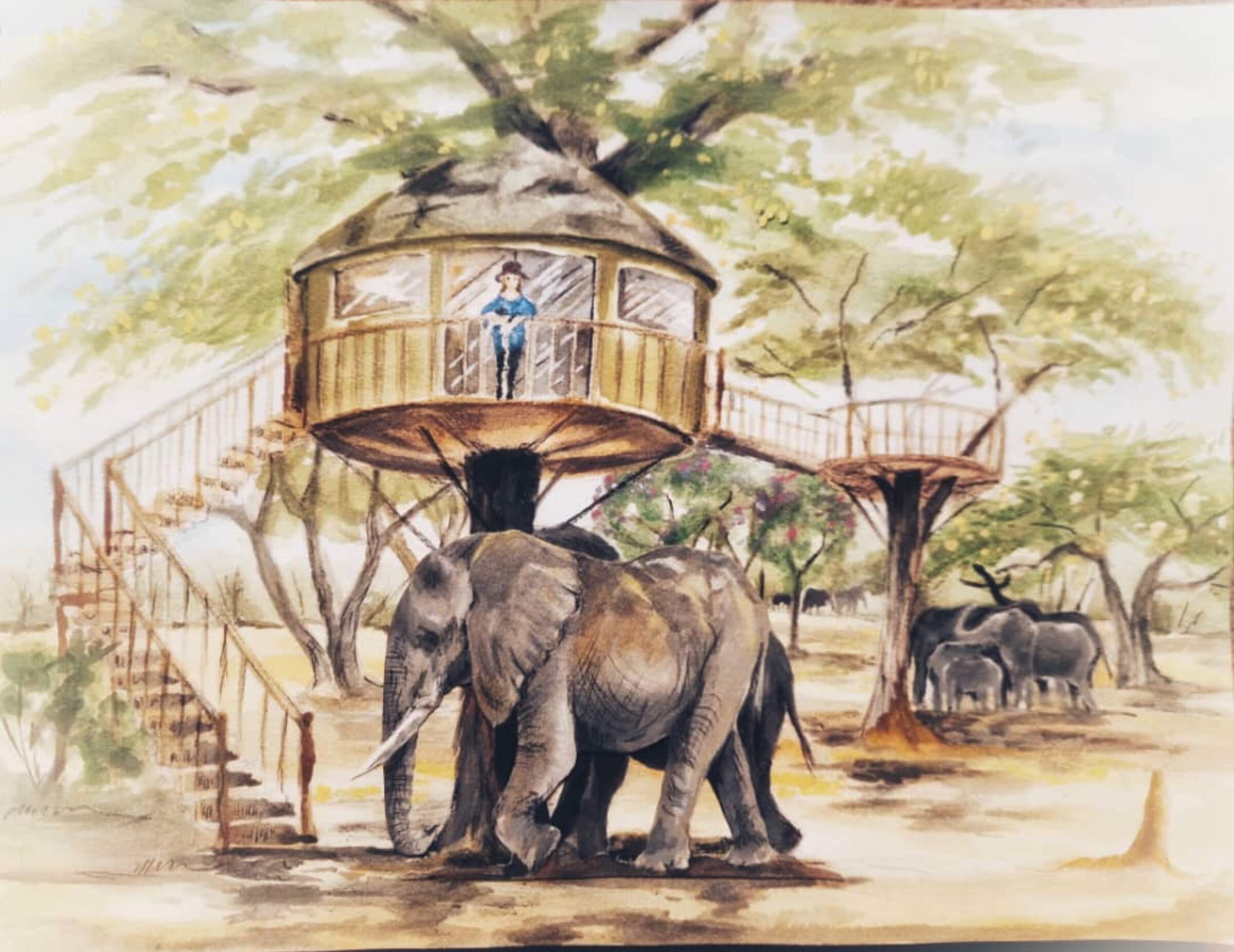
Tum Tum
The Tum Tum Treehouses are due to open in late 2025. Details on this exciting development are still scarce, so watch this space.
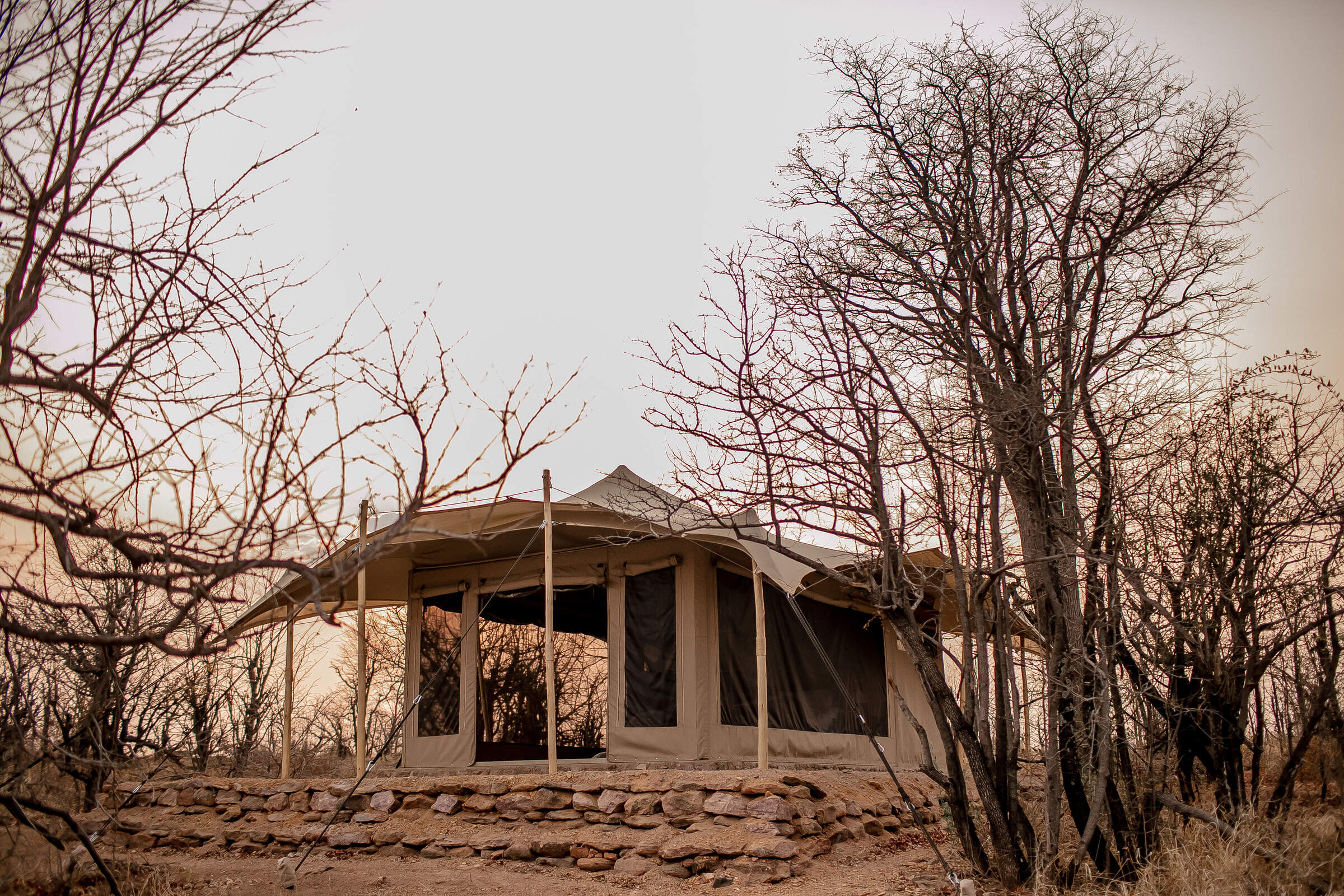
Camp Chitubu
Nestled in the rugged north of Hwange National Park, the unpretentious yet comfortable Camp Chitubu has a strong focus on excellent guiding.
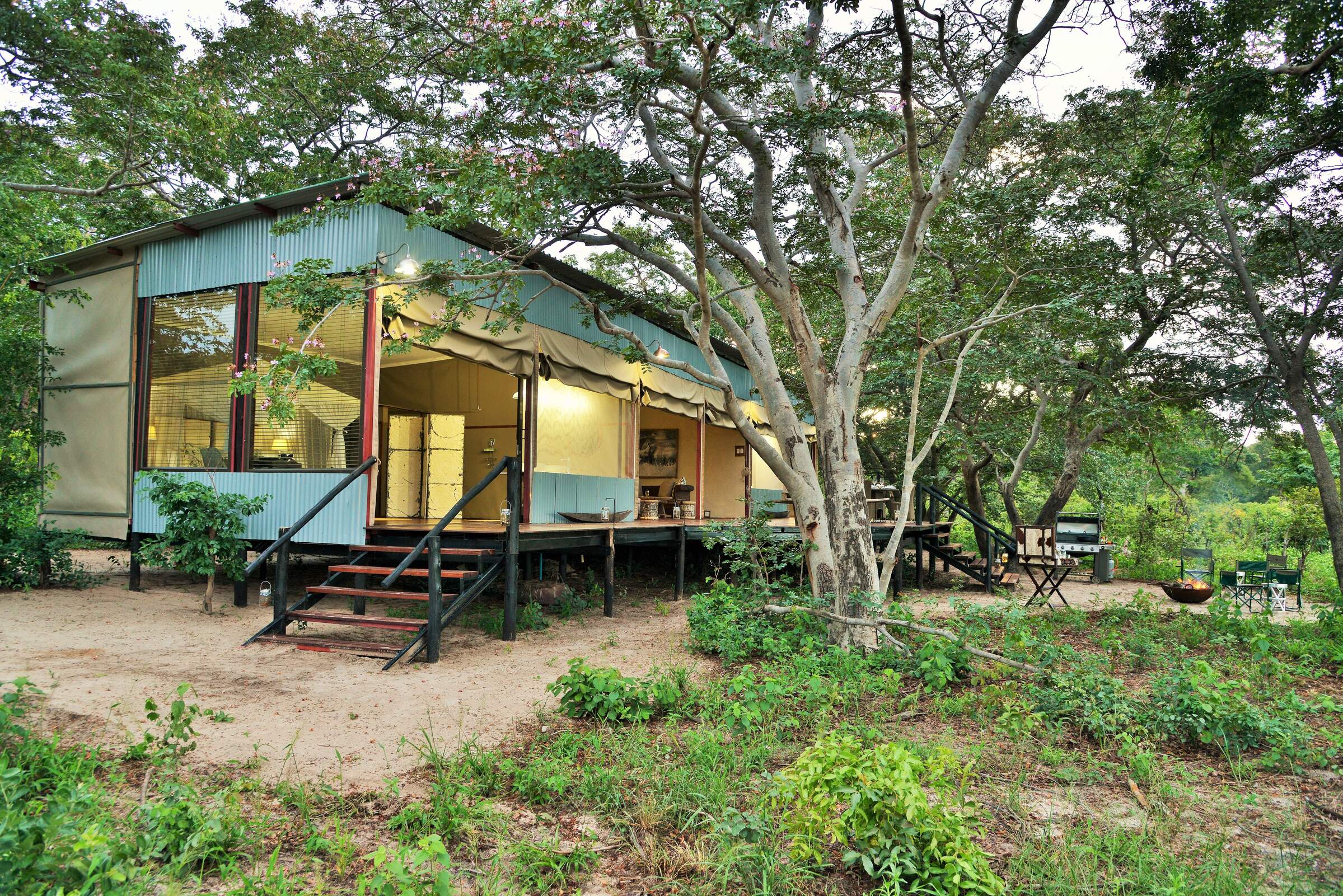
Khulu's Retreat
Just outside Hwange National Park, Khulu's Retreat is an exclusive private villa and is a great place to spoil yourself on a safari in Zimbabwe.
When to go to Hwange National Park
Our month by month guide: What it's like to visit Somalisa Expeditions in Hwange National Park
Jan
Feb
Mar
Apr
May
Jun
Jul
Aug
Sep
Oct
Nov
Dec
Zimbabwe in January
January falls in the middle of Zimbabwe’s rainy season and is the wettest month of the year. Heavy rainfall occurs most days, flooding seasonal rivers and waterholes, with the occasional sunny spell.
With the high levels of precipitation the wildlife in the national parks becomes widely dispersed, taking advantage of the abundance of food and water, and is easily hidden by the thick, green bush.
While sightings of larger animals are possible, and many species drop their young at this time, game viewing is often sparse. However, many migratory species of bird arrive in Zimbabwe making it a peak month for birding.
The rains create incredibly sticky mud in Mana Pools National Park, preventing access and causing camps to close for the season. The majority of the camps in other parks remain open, with low rates attracting a smattering of visitors.
- Peak of the rainy season: hot & humid with heavy rain most days
- Bush exceptionally thick and green, with poor game viewing
- Species such as impala drop their young
- All camps in Mana Pools closed
- Very few visitors, and low rates at open camps
Our view
A time to avoid if possible
Weather in January
Zimbabwe in February
February remains well within Zimbabwe’s rainy season. Although total rainfall drops, relatively short thunderstorms can still be expected most afternoons. On the plus side, there is a greater chance of some sunshine in-between.
Much of the country remains waterlogged, closing access to Mana Pools and severely restricting walking safaris in other parks. While game drives and canoeing remain an option, the abundance of water disperses animals, and thick grass can make it difficult to spot larger species, but birding remains excellent. Conversely, this is a great time of year to view the landscape, and is excellent for photographers. Sporadic cloud cover and clear air can make for some spectacular sunsets too, particularly over Lake Kariba and the Zambezi River where the reflections off the water add to the beauty.
- Generally wet with frequent thunderstorms & hot humid days
- Poor wildlife viewing due to dispersed animals & thick bush
- Clear air, green landscapes & exceptional sunsets
- All camps in Mana Pools closed
- Very few visitors & low rates at camps that are open
Our view
This is not a great time to visit
Weather in February
Zimbabwe in March
March is the final month of Zimbabwe’s rainy season, when the rains start to trail off and sunny days become the norm. However, some days the clouds can still build, breaking into thunderstorms in the afternoon.
Mana Pools remains closed throughout the month but the majority of camps in Hwange, Matusadona and Gonarezhou remain open. Here, the landscape is green and alive, with migrant species of birds taking advantage of the abundant insect life. Larger animals remain elusive though, and walking safaris remain restricted.
By this time of year, the rains have normally trickled down to the Zambezi River and the flow of water over the Victoria Falls starts to increase, but without kicking up too much spray to obscure the views.
- Last month of the rainy season: hot, humid days with occasional storms
- Lush vegetation means good birding, but poor game viewing
- Views of the Victoria Falls improve
- All camps in Mana Pools closed
- Open camps have few visitors & low rates
Our view
This is not a great time to visit
Weather in March
Zimbabwe in April
April marks the end of Zimbabwe’s rainy season and the end of summer. Clear skies are the norm, with just the occasional shower. Temperatures start to drop, failing to reach 30ºC most days and dropping down to around 10ºC at night.
As the rain fades the landscape starts to dry out. While the vegetation remains thick and green, the soil in Mana Pools dries enough for camps to open, and the only camps to remain closed are the most remote bushcamps in Hwange. Although viewing of larger animals remains tricky, the improved weather starts to draw back visitors, as do prices significantly below those in the peak season.
The Zambezi River and flow of water over the Victoria Falls is at its highest, although large amounts of spray diminish views of the waterfall itself.
- Transitional period, with much lower rainfall & falling temperatures
- Wildlife is still dispersed & hard to see, but sightings improving
- Views of the Victoria Falls often obscured by spray
- Camps in Mana Pools open
- Visitors start to return & camps increase their rates
Our view
A good time to visit, with pros & cons
Weather in April
Zimbabwe in May
The first month in the dry season, May is also Zimbabwe’s first month of winter. If the rains are particularly late in a given year, you may catch the odd shower, but you can expect clear and sunny days the majority of the time. While it’s warm in the daytime, temperatures drop to single digits at night, so bring a warm jumper and gloves for early morning drives.
With the rain having cleared the air, the sky is bright blue, and it’s the best time of year for photography.
Even the most remote camps in Zimbabwe are now open. With the lack of rainfall, vegetation dies back significantly, and seasonal rivers return to sand. Not only does this open up the possibility of walking safaris, but wildlife viewing becomes much more reliable.
- Start of the dry season, with milder days and cold nights
- Game viewing significantly improves as vegetation dies back
- Vegetation starts to turn from green to brown
- Best time for photography with crystal clear air
- Visitors start to return; all camps open & rates increasing
Our view
A very good time to visit
Weather in May
Zimbabwe in June
During June you can virtually be guaranteed of dry and sunny days, although temperatures continue to drop, and can get close to freezing at night in Hwange National Park. Jumpers, jackets and gloves are strongly recommended for early mornings and evenings.
The opportunities for wildlife viewing improve throughout the month as the landscape rapidly dries, and the animals start to gather on the banks of the Zambezi River and around Hwange’s waterholes.
Water levels in the Zambezi River start to drop, reducing the amount of spray kicked up at the Victoria Falls and greatly improving visibility, but still allowing a full curtain of water to cascade over the edge.
- Middle of winter, with night-time temperatures close to freezing
- Game viewing significantly improves throughout the month
- Views of the Victoria Falls are at their best
- Noticeable increase in visitor numbers
- Camps considerably more expensive
Our view
A very good time to visit
Weather in June
Zimbabwe in July
July sits in the middle of Zimbabwe’s dry season. Although it’s warm at midday, temperatures are generally cold and in Hwange it’s been known to drop below freezing at night, with the lower-altitude Mana Pools feeling a bit warmer.
With wildlife clustering around the few remaining waterholes, sparse vegetation, and some of the best views of the Victoria Falls, this is one of the most popular times to travel, with camps charging peak season rates to reflect this. That said, visitor numbers to the country in general remain low, and outside of the Victoria Falls it’s rare for any areas to feel crowded.
- Middle of the dry season with almost no chance of rain
- Clear sunny days, but very cold nights
- Wildlife viewing good; game drives and walking safaris unrestricted
- Views of the Victoria Falls at their best
- Camps charging peak season rates
Our view
A very good time to visit
Weather in July
Zimbabwe in August
While August is the end of winter and temperatures are starting to creep up, mornings and nights are still cold, and game drives in open vehicles can feel particularly chilly. Well into the dry season, the landscapes will have mostly transformed from green to brown and wildlife viewing in Zimbabwe’s national parks is approaching its best. Due to dust kicked up into the atmosphere and smoke from bush fires you may start to notice a haze on the horizon, but this doesn’t significantly impact photography.
August is one of the most expensive months, and the pleasant weather and decent game viewing attracts lots of visitors. While the national parks rarely feel crowded, Victoria Falls accommodation can sell out a year in advance.
- Warm, sunny days but cold mornings & nights; almost no chance of rain
- Wildlife viewing nearly at its best
- Landscape turns brown, & an atmospheric haze develops
- All camps charging peak season rates
Our view
Fantastic: the very best time to visit
Weather in August
Zimbabwe in September
Temperatures in September rarely drop below 15ºC, but are yet to reach the oppressive highs of summer. It will normally have been five months since the last drop of rain, so antelope and elephants cluster around whatever water remains, with predators never too far away.
The landscape is very brown, and the haze building on the horizon takes some of the colour out of the sky, so while animal subjects are plentiful, the background is not ideal for photography.
The combination of incredible wildlife viewing, hot and sunny weather, and cheaper flights outside of the school holidays make this the most popular time of year to travel, and availability at the camps can become limited up to a year in advance.
- The best month for weather, with a pleasantly warm temperature range
- One of the best months for game viewing
- Victoria Falls starting to dry but still impressive on Zimbabwean side
- All camps are charging peak season rates
- Most popular time to travel, & space can be limited
Our view
Fantastic: the very best time to visit
Weather in September
Zimbabwe in October
October is the last month of the dry season with little chance of rain but building humidity. While the higher elevation of Hwange National Park limits temperatures to the 30s Celsius, they can easily top 40ºC in Mana Pools.
With little vegetation or water, wildlife is drawn to the few remaining water sources and viewing is at its best; visitors who brave the heat can be rewarded with some exceptional sightings, although haze in the air diminishes photos. Maximum visibility and dense wildlife concentrations can also make for very rewarding walking safaris, although the heat can make them uncomfortable.
Water levels in the Zambezi at the Victoria Falls drop significantly, and large stretches of the waterfall are a dry cliff-face – although it never dries completely. Camp rates remain at their peak, but visitor numbers drop as people avoid the heat.
- Last month of the dry season; very hot with building humidity
- Wildlife viewing at its very best
- Dust & smoke in the air diminish photographic opportunities
- Victoria Falls starting to look very dry
- Camp rates remain at their peak
Our view
A very good time to visit
Weather in October
Zimbabwe in November
November is a transitionary period, with high temperatures and humidity. While they can’t be predicted with any precision, the first rains normally arrive halfway through the month, in the form of thunderstorms lasting a few hours each day.
Early November is a popular time to travel as the camps drop their rates, so if you’re lucky you can get peak-season game viewing at low-season rates. This is a gamble though as if the rains do arrive, animals are no longer limited to a few dangerous waterholes and will disperse into the bush. While all the camps in Mana Pools intend to remain open, the rains can make the airstrips unusable so you may find yourself moved to a different park, a risk that increases through the month.
- Typically the start of the rains in Zimbabwe
- Temperatures & humidity levels remain high
- Wildlife viewing rapidly diminishes as the rains arrive
- Camps remain open, but risk early closure in Mana Pools
- Much cheaper time to travel as camps drop their rates
Our view
A good time to visit, with pros & cons
Weather in November
Zimbabwe in December
By December the rainy season has begun in earnest; this is one of the wettest months in Zimbabwe, with heavy thunderstorms most afternoons and occasionally continuous rain for a couple of days. While temperatures start to cool down the high levels of humidity can make the heat feel more oppressive.
With the rains comes an explosion of green growth, and the dust and smoke are washed out of the air. The resulting scenery – with the occasional bright blue skies – can be fantastic for photographers. Thick vegetation and plentiful water makes viewing of larger animals tricky, but with migratory species arriving the birding is at its best.
All camps in Mana Pools and the remote Hwange camps close, with those remaining open charging their lowest rates.
- One of the wettest months in Zimbabwe
- High temperatures & levels of humidity
- Wildlife viewing poor, but birding good
- Lush green landscapes & clear air; great for landscape photography
- All camps in Mana Pools closed
Our view
This is not a great time to visit
Weather in December

Looking for inspiration on where to travel next?
Visit our trip chooser to explore your options and find inspiration for your perfect African adventure
Inspire me